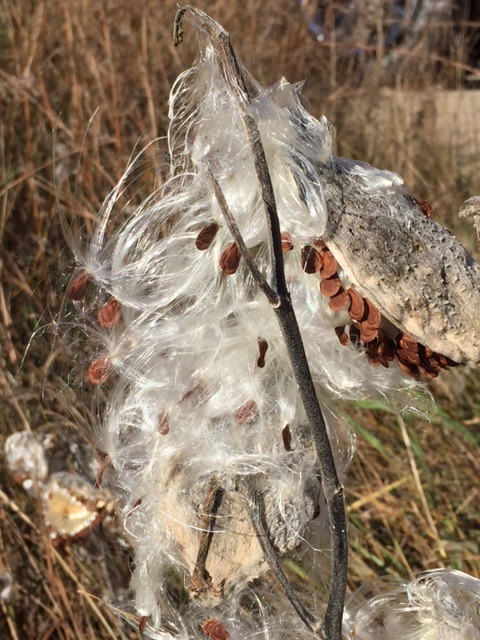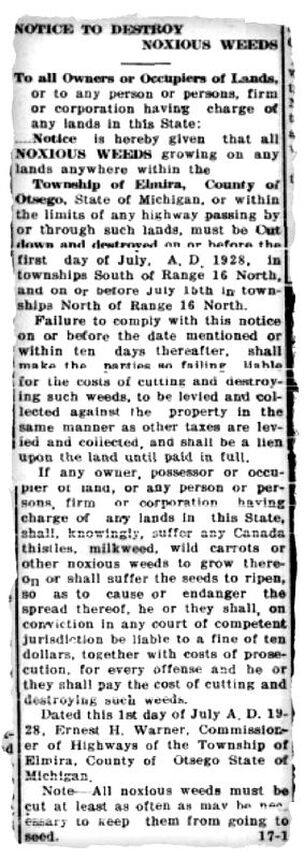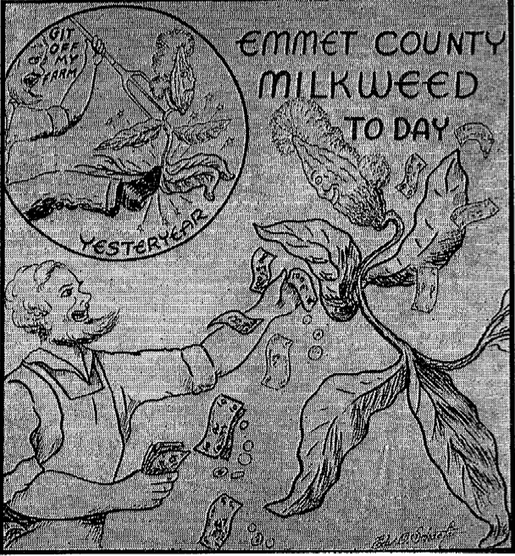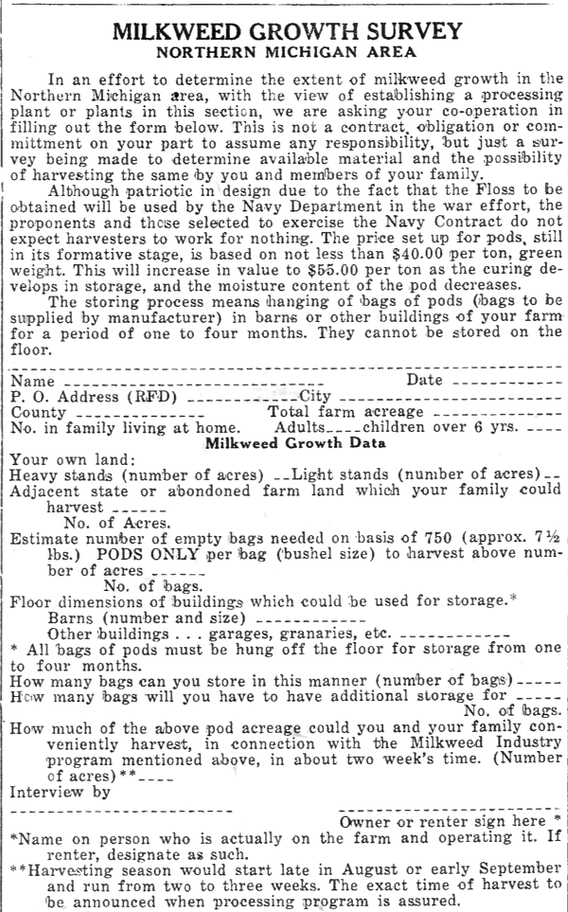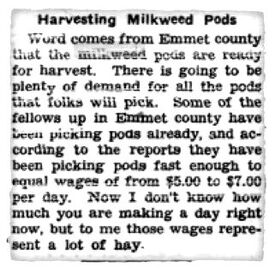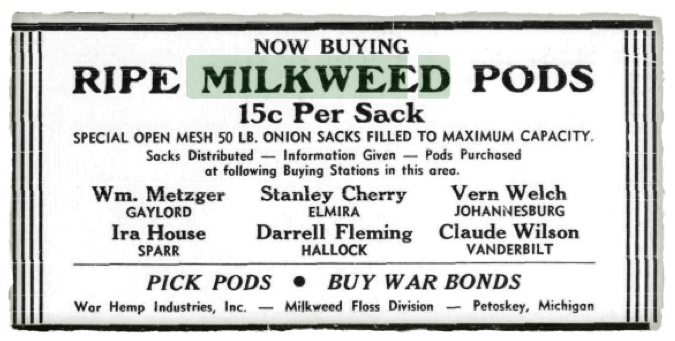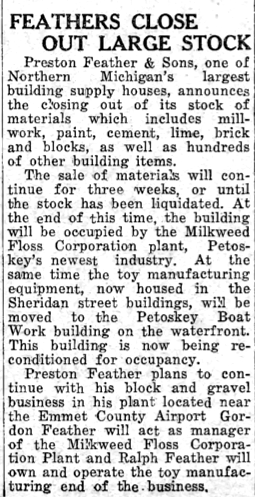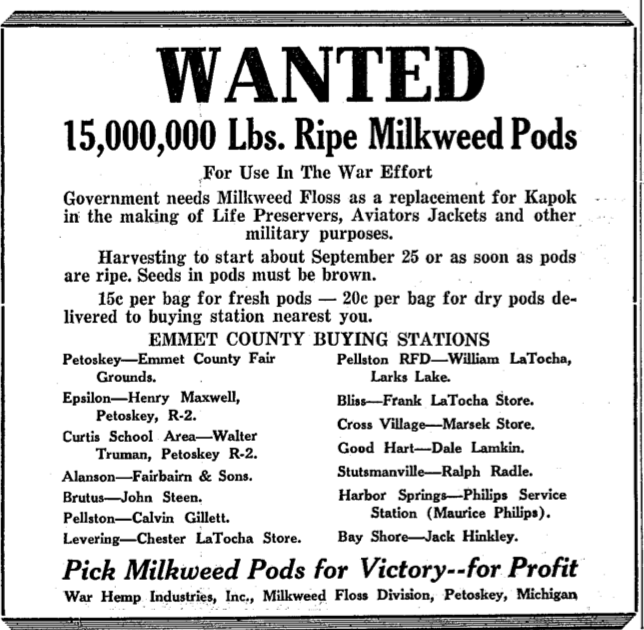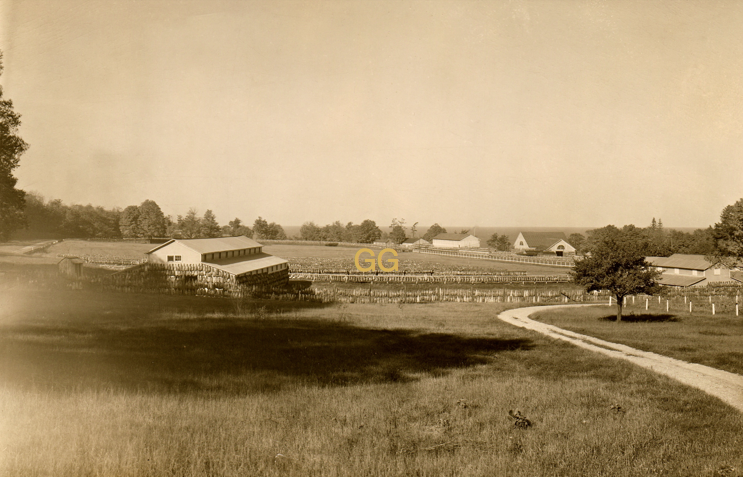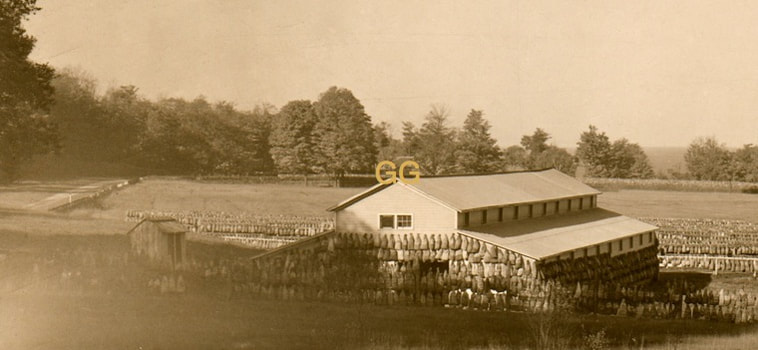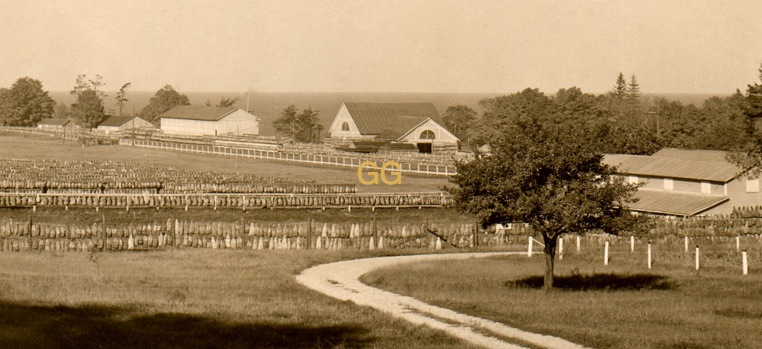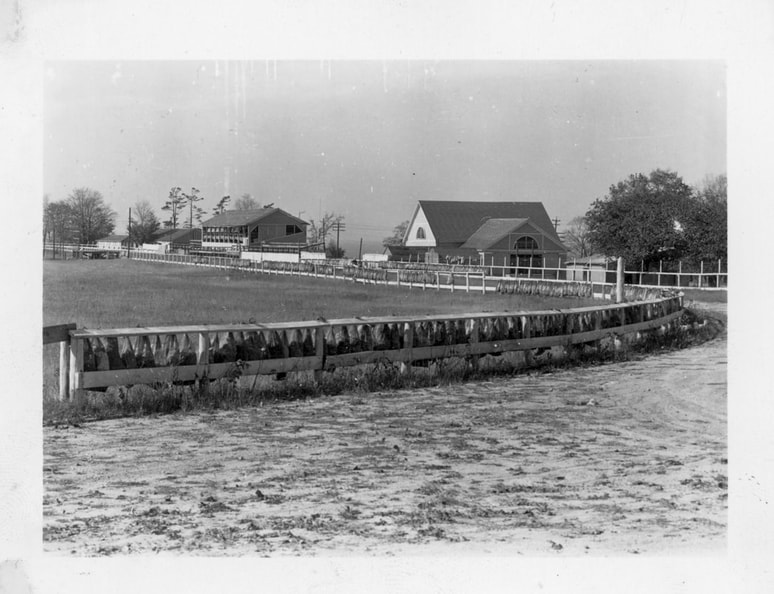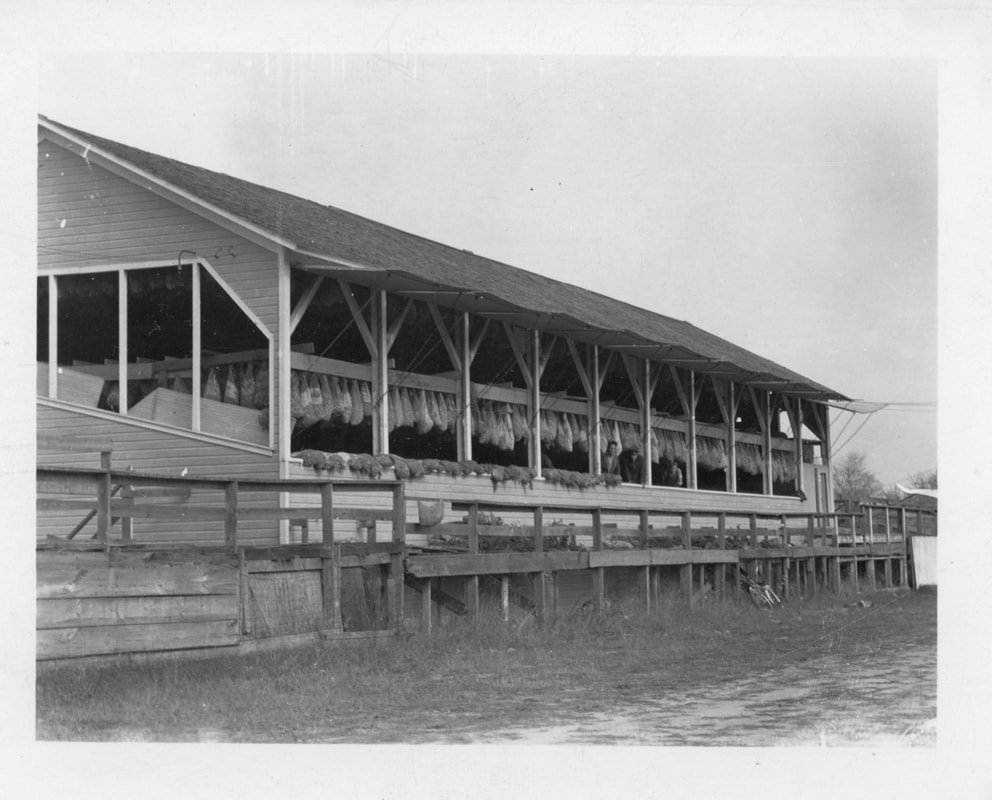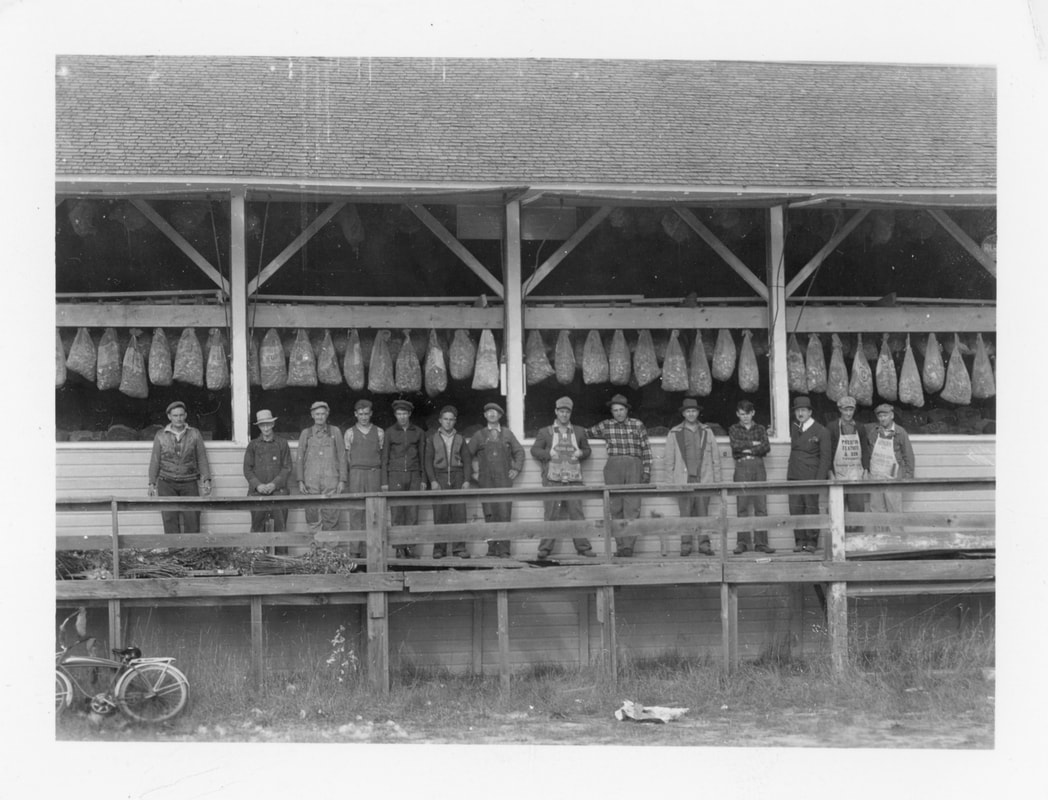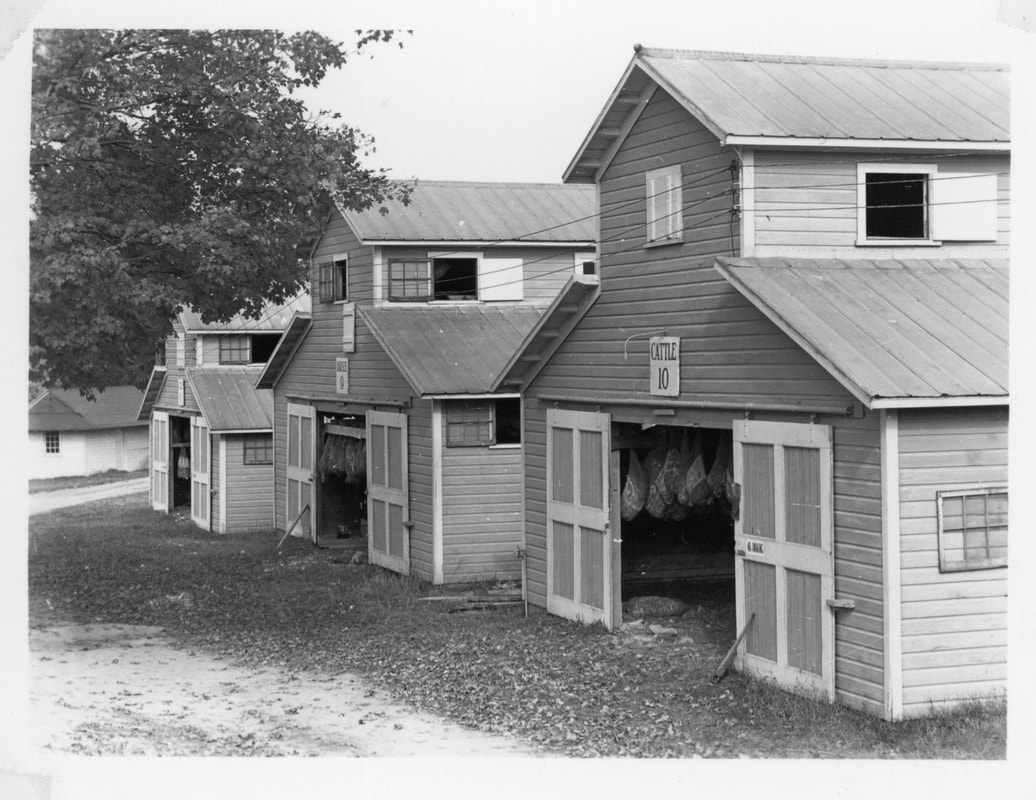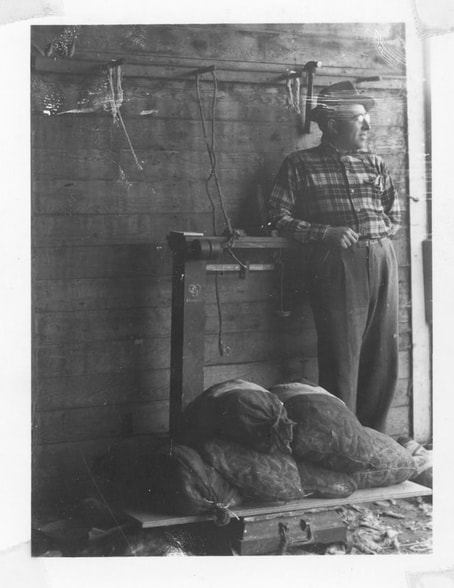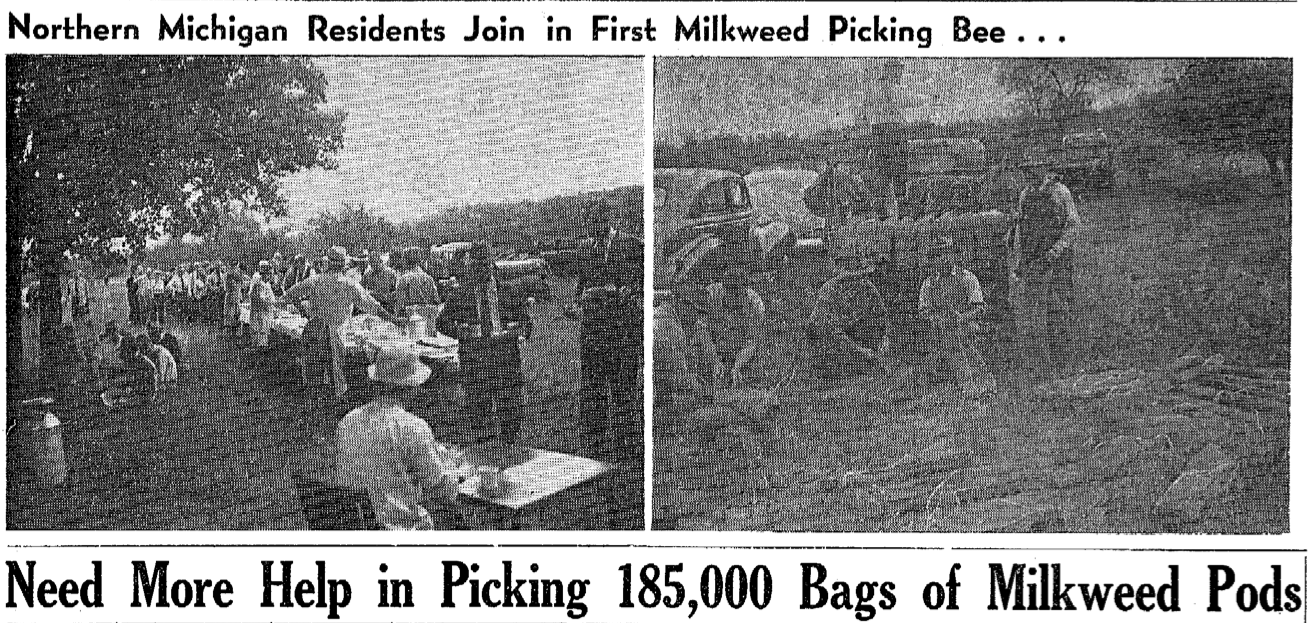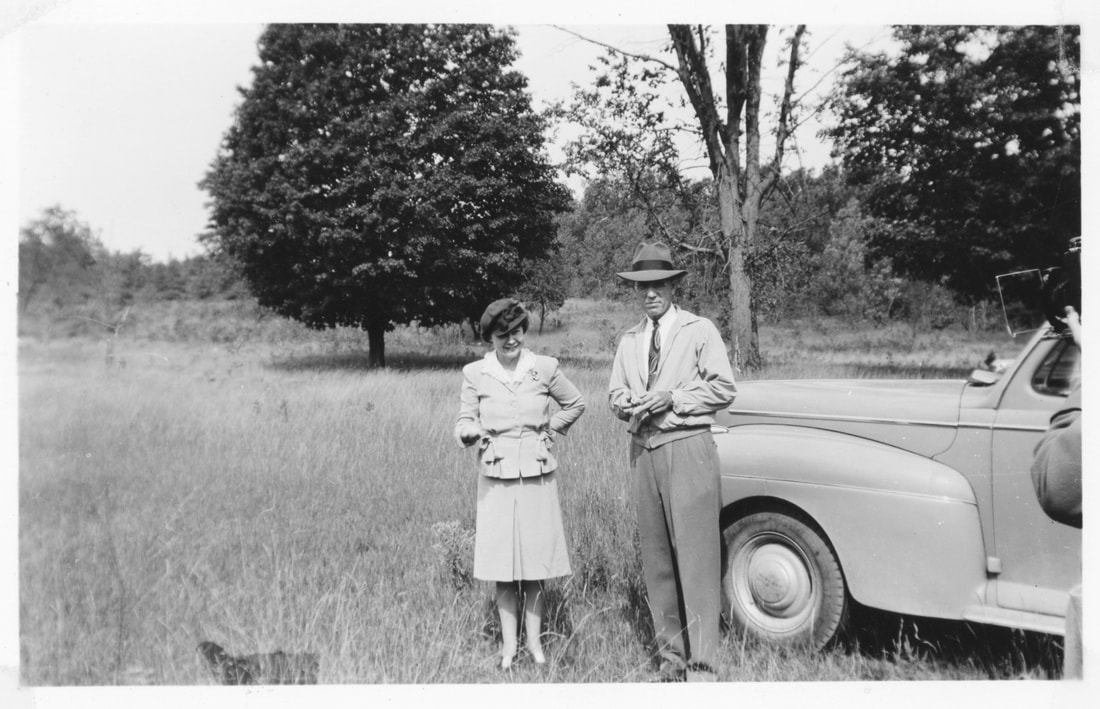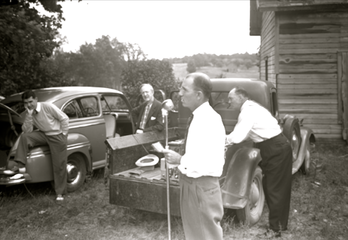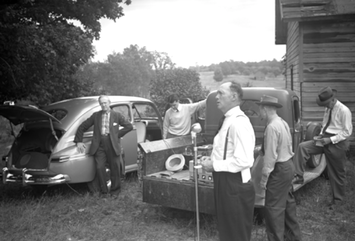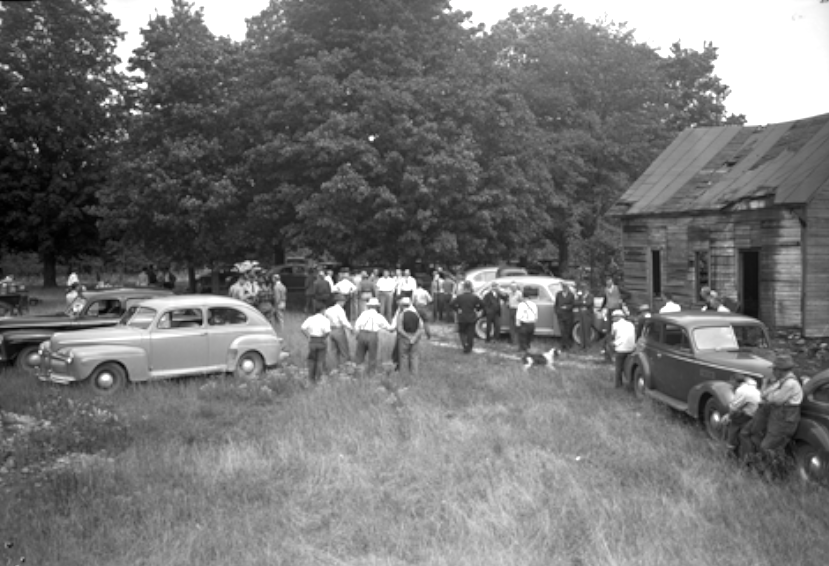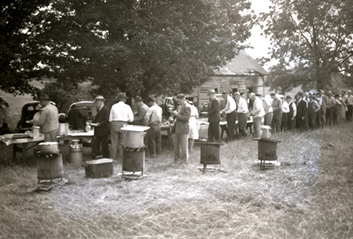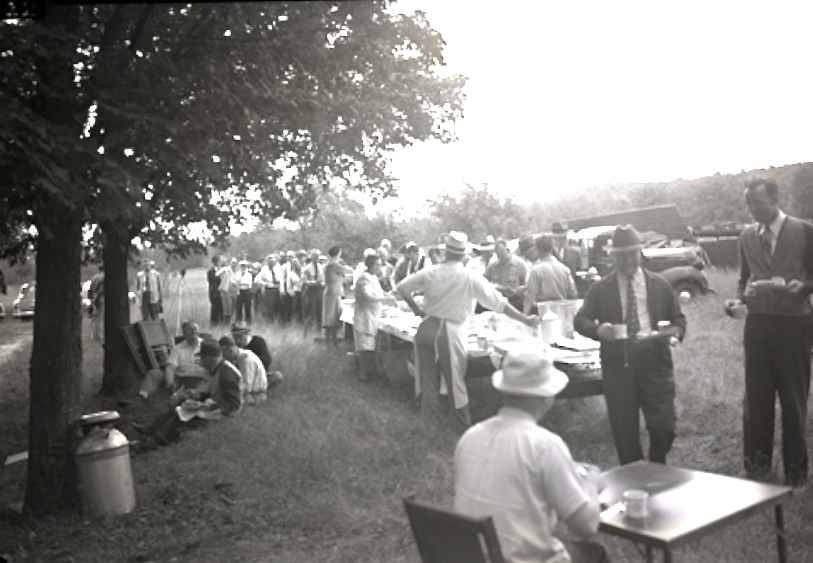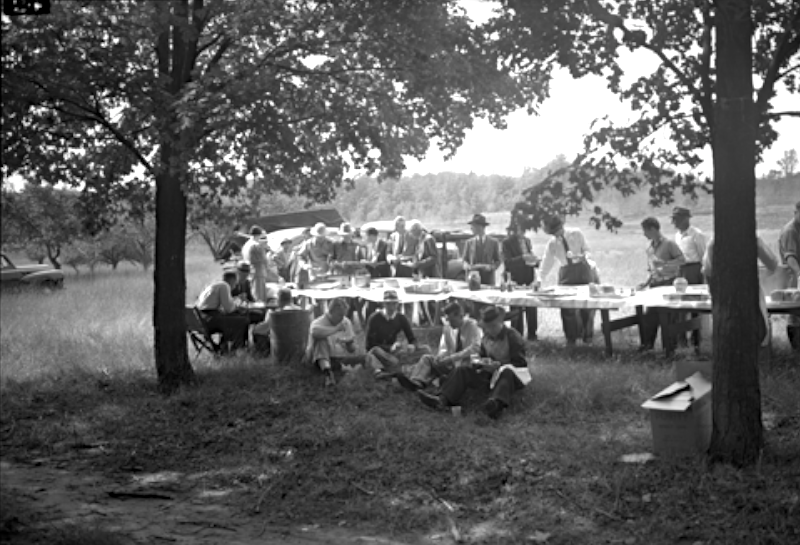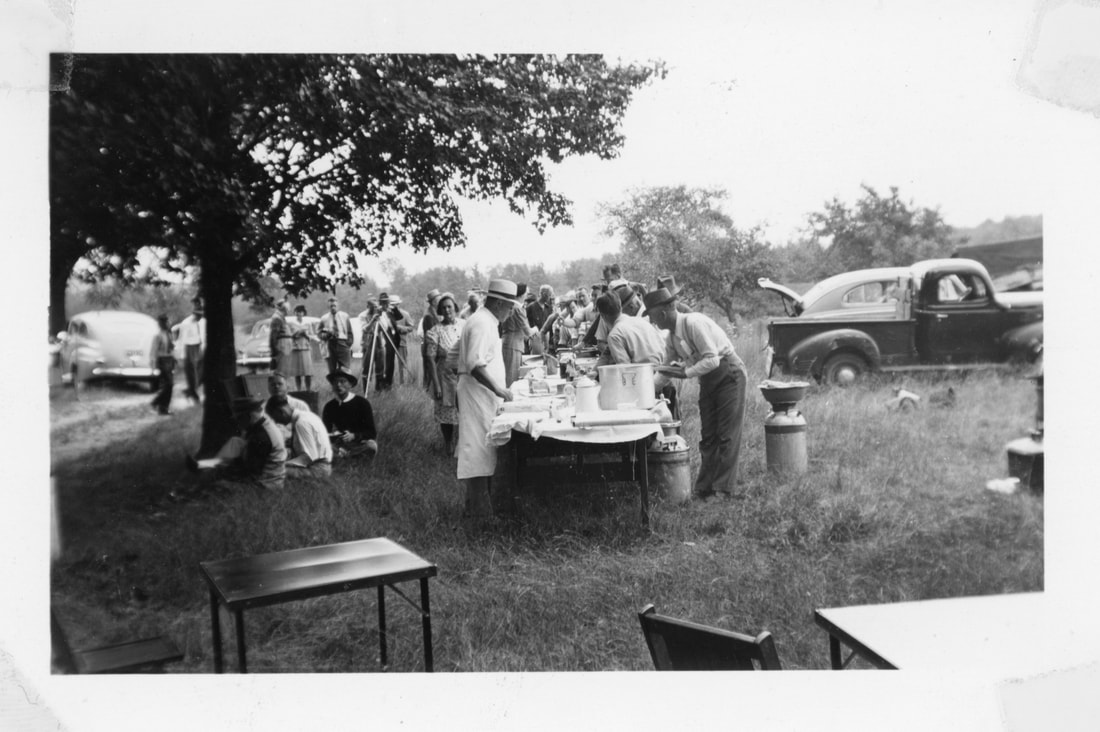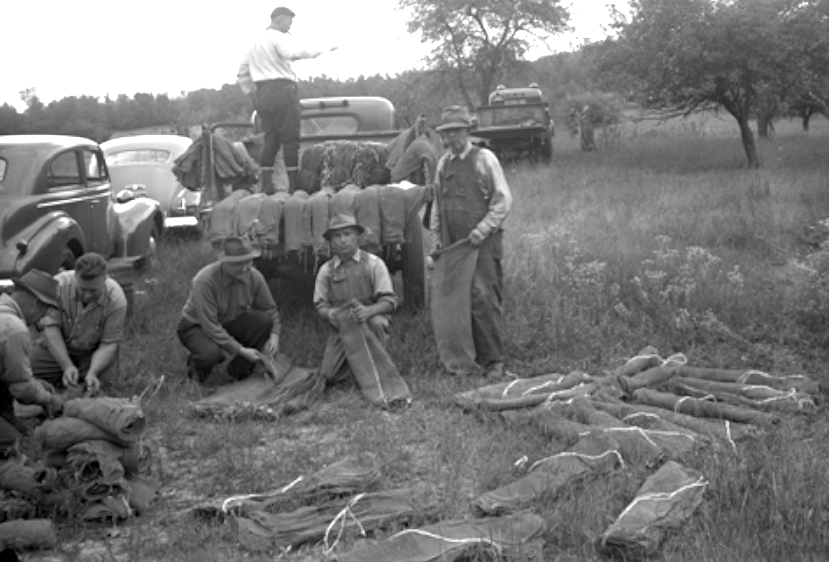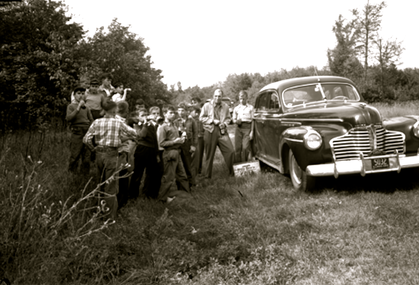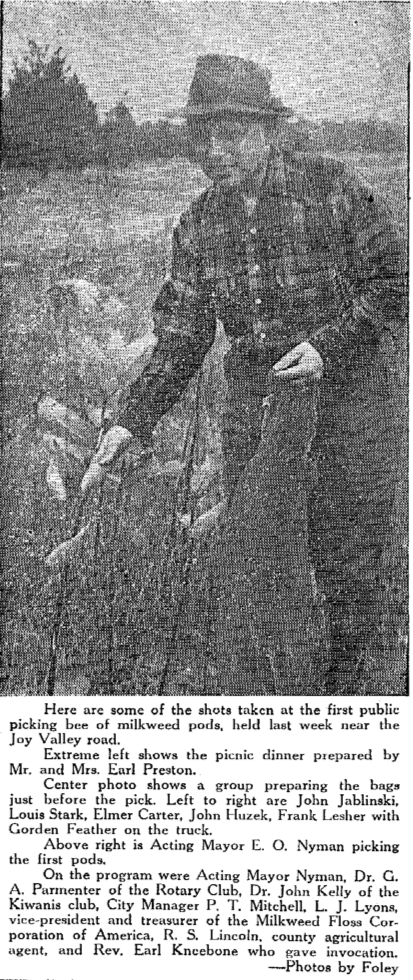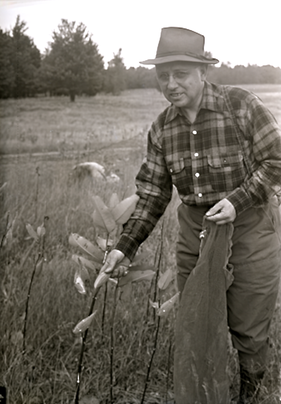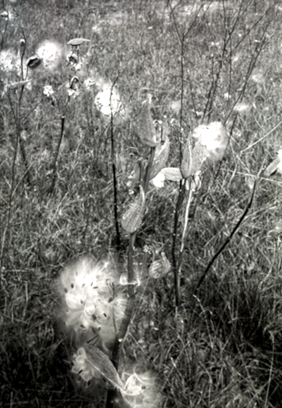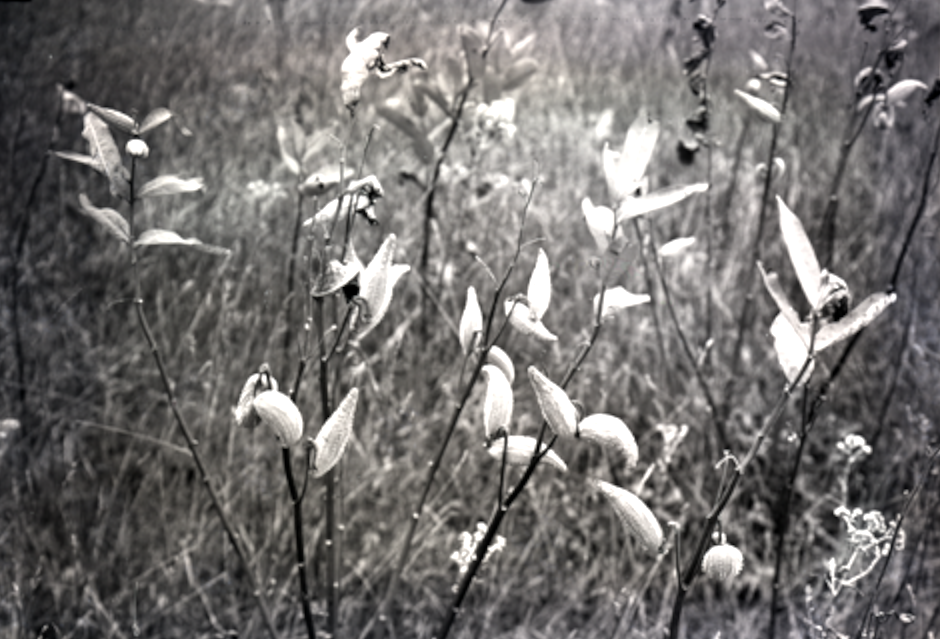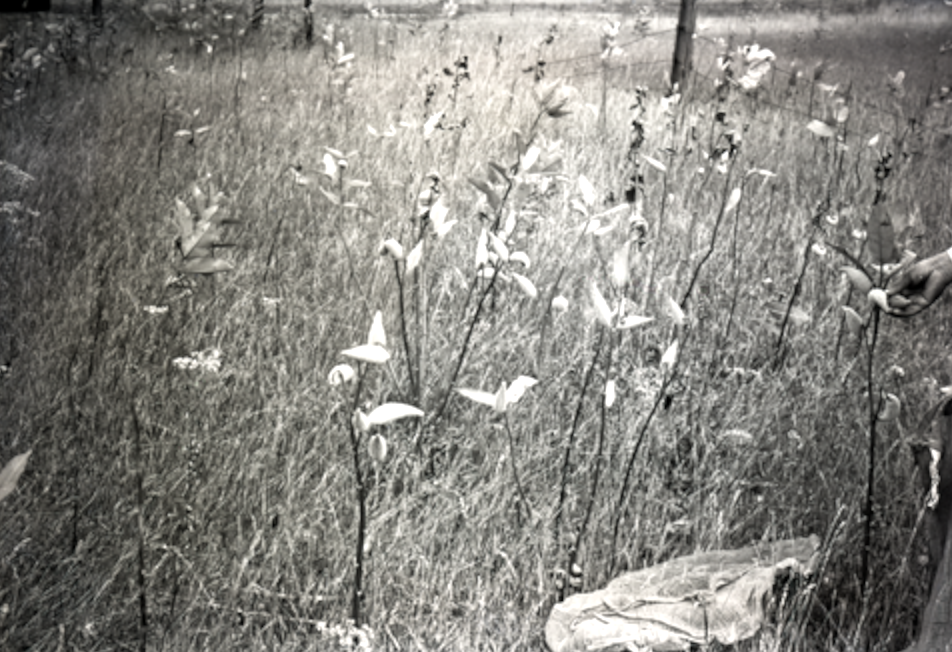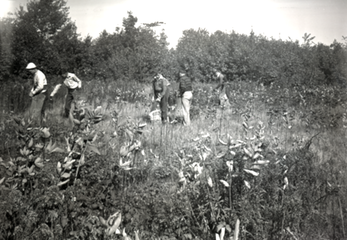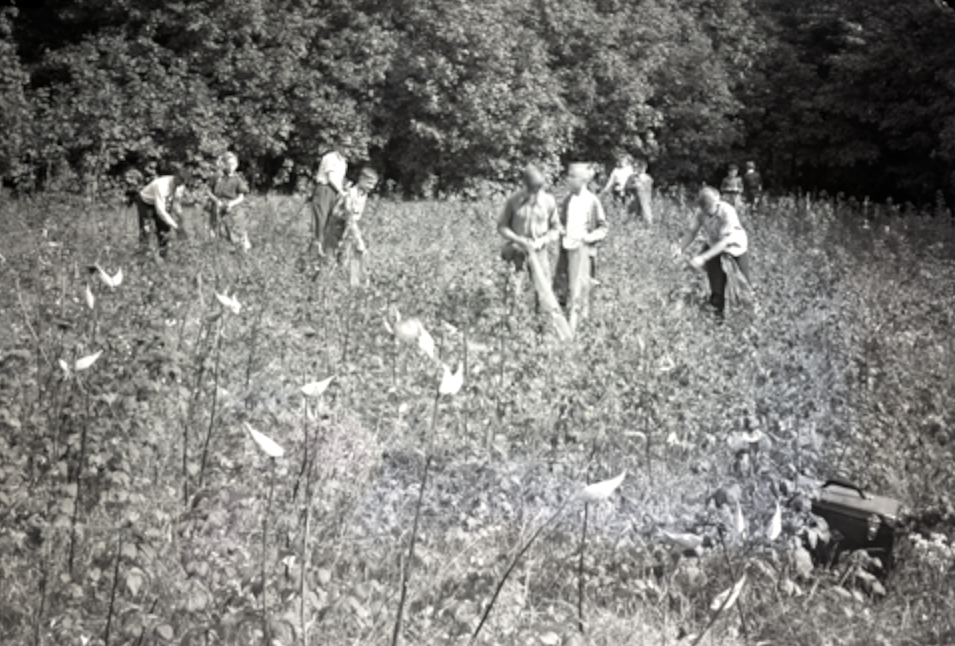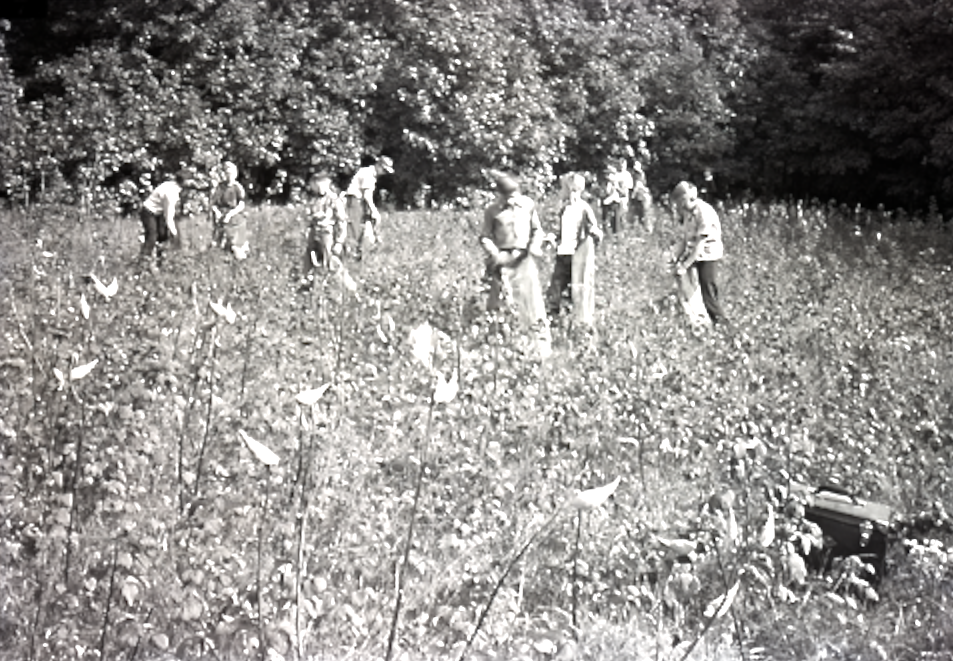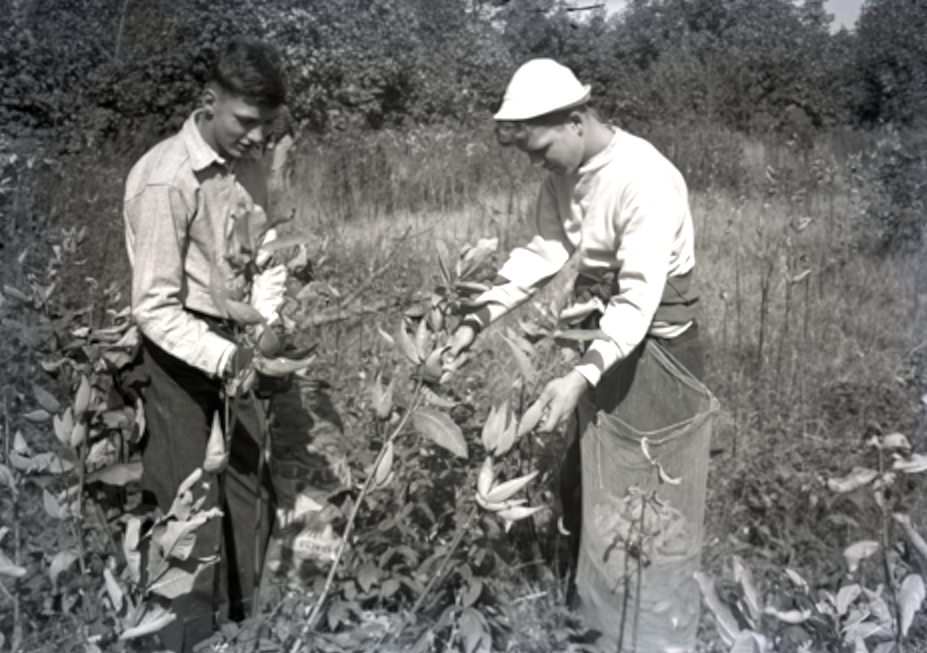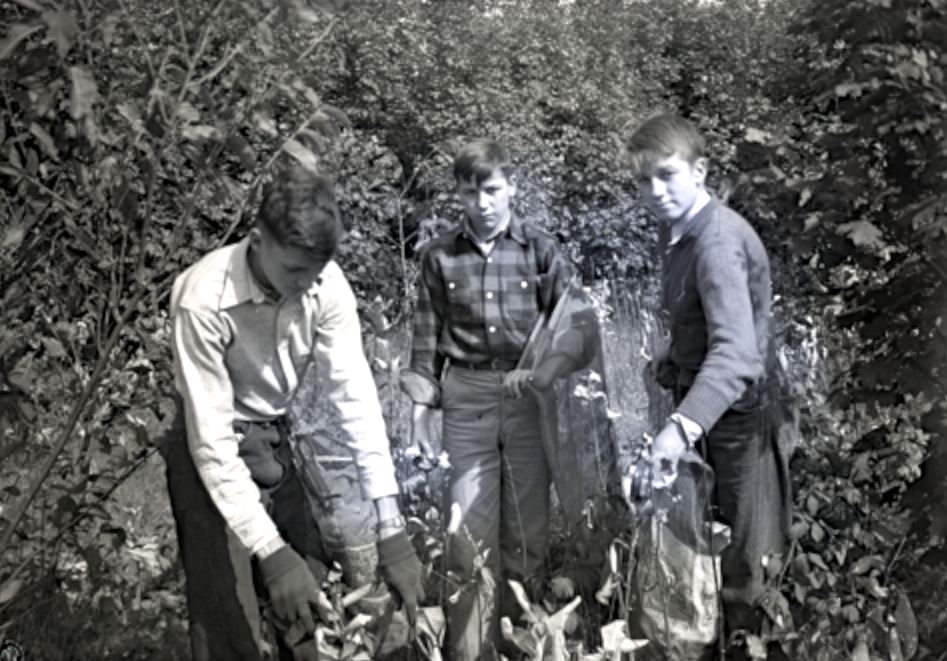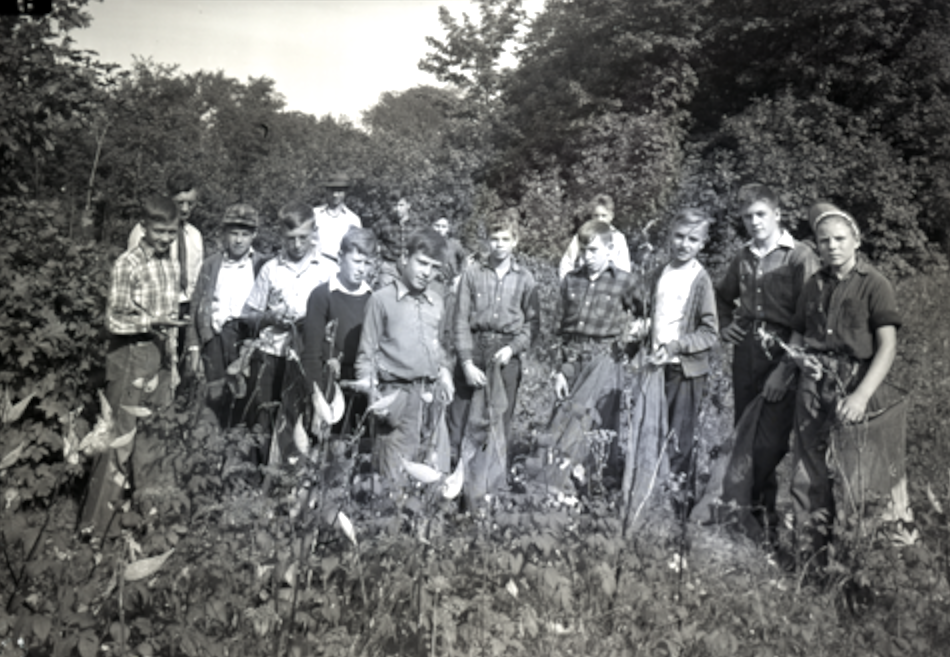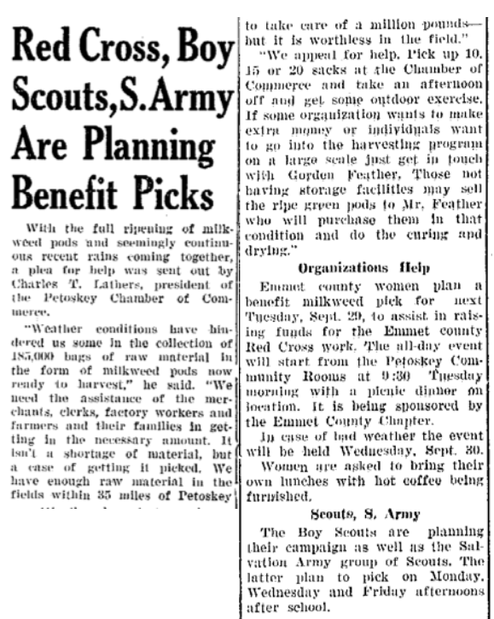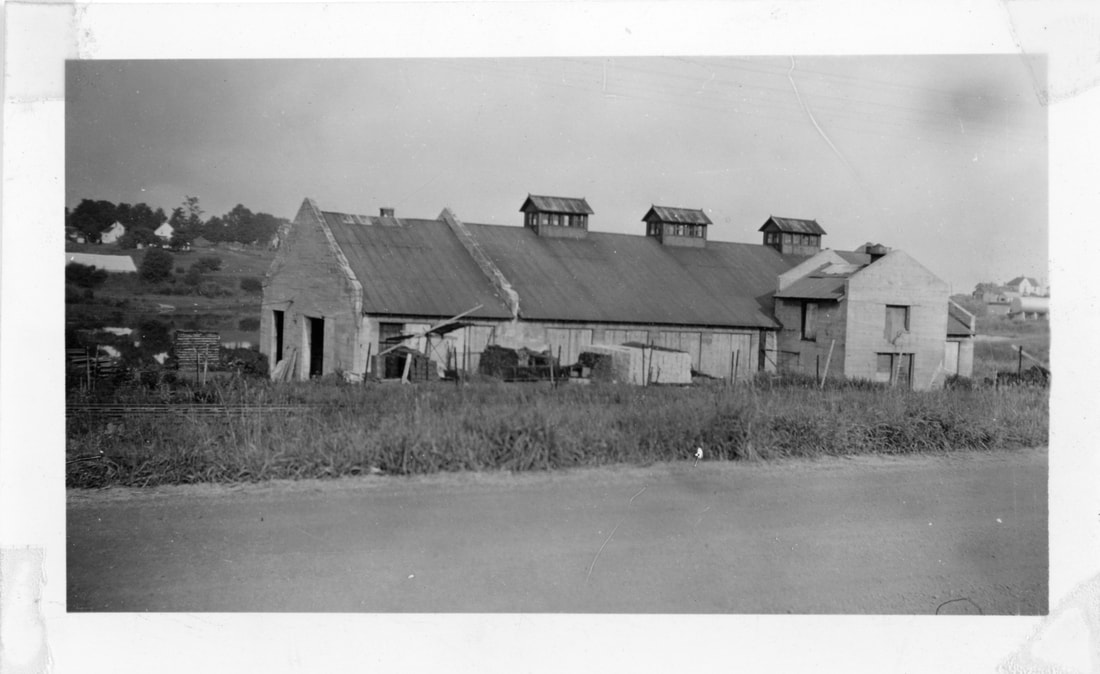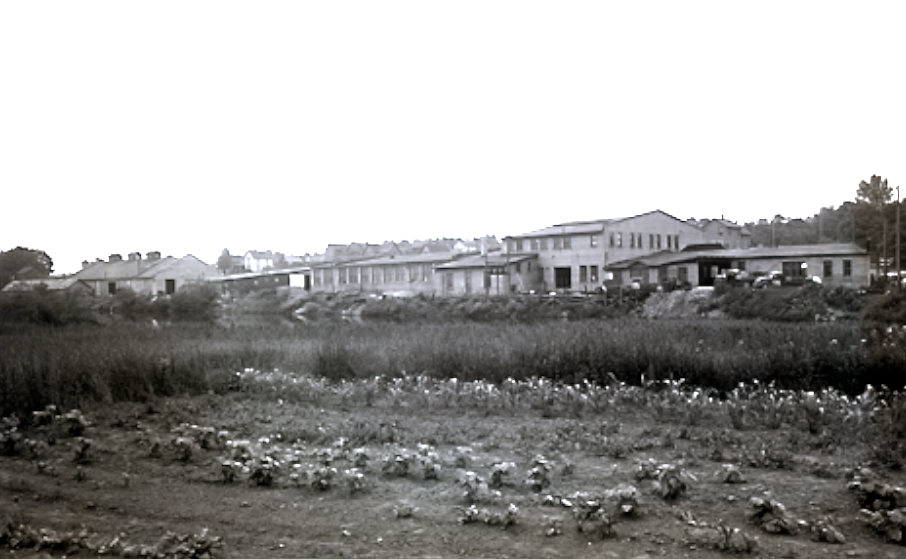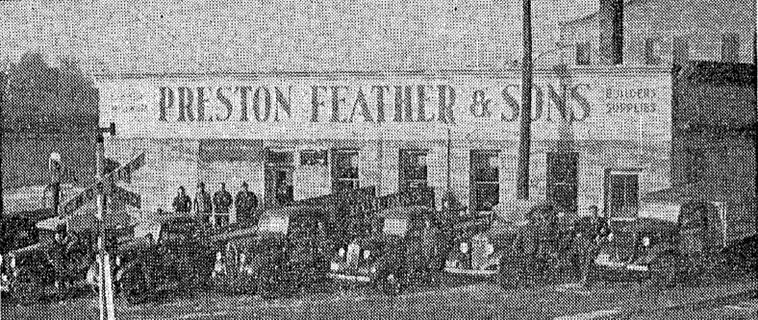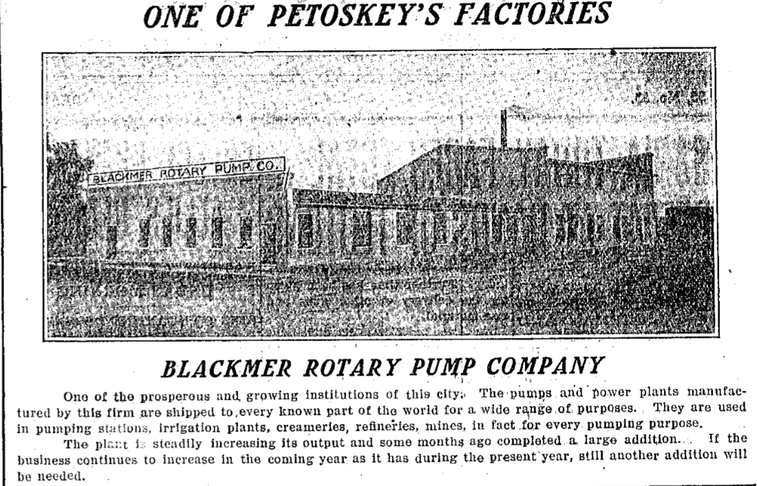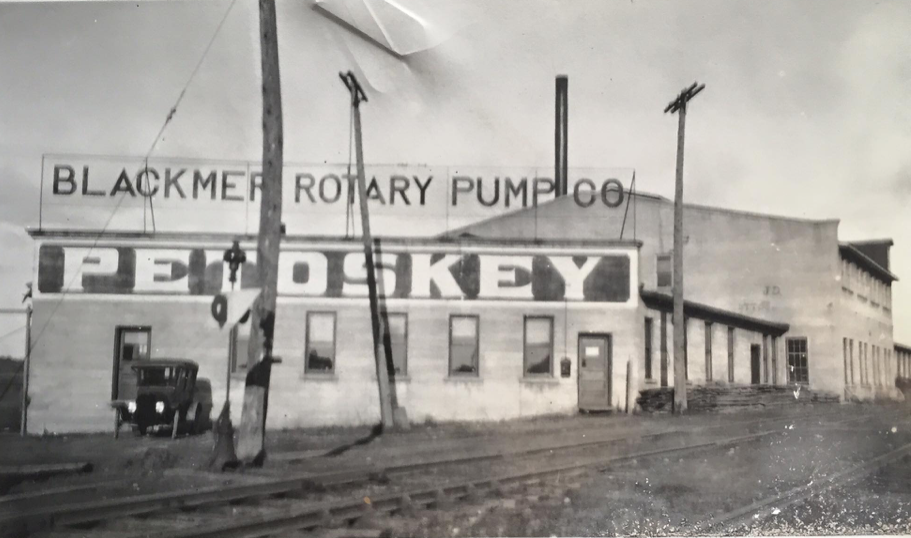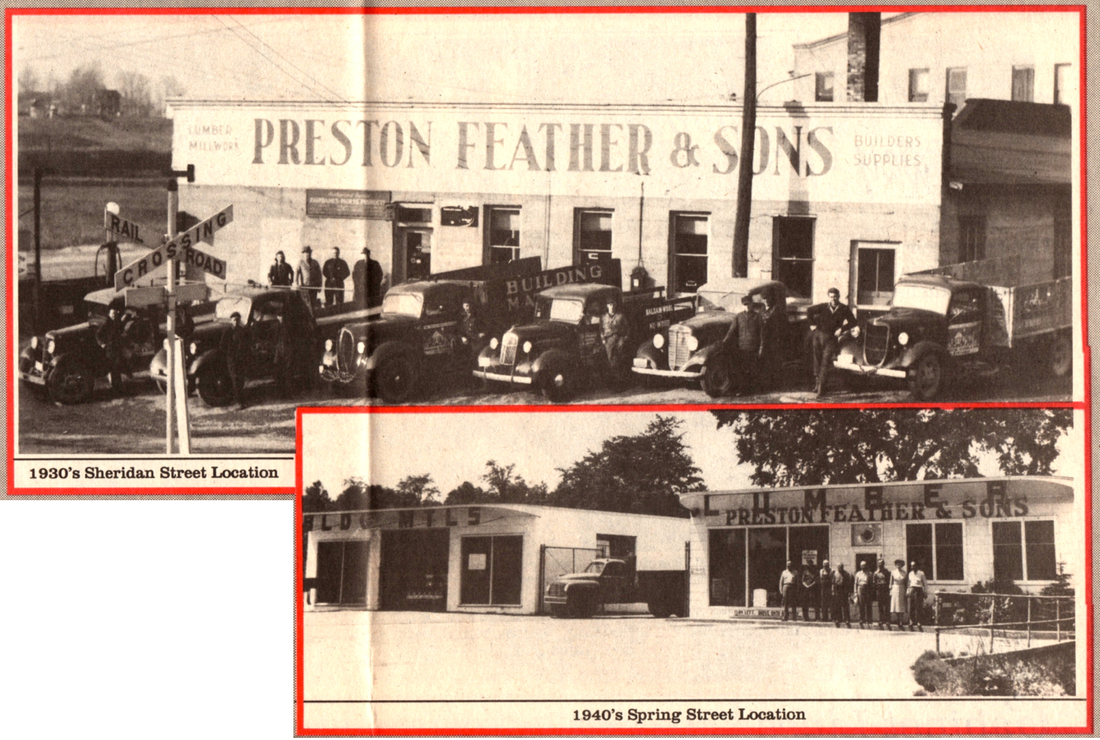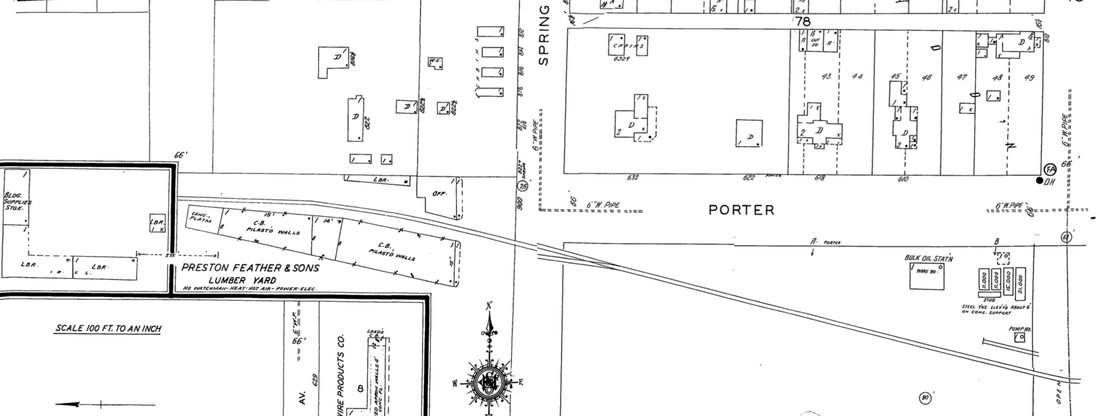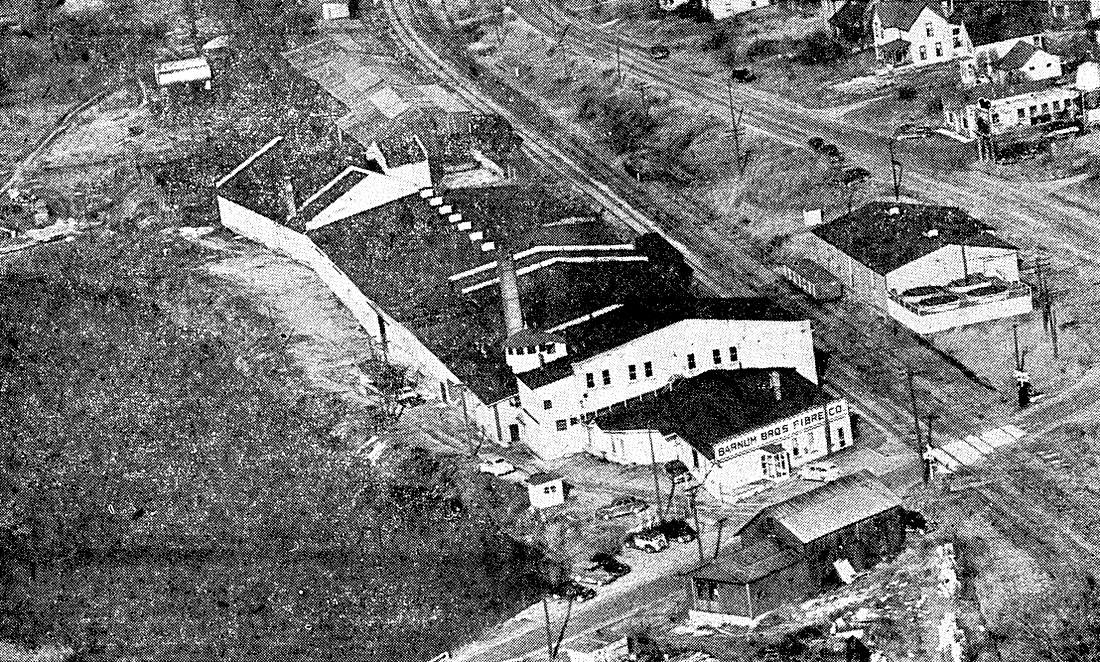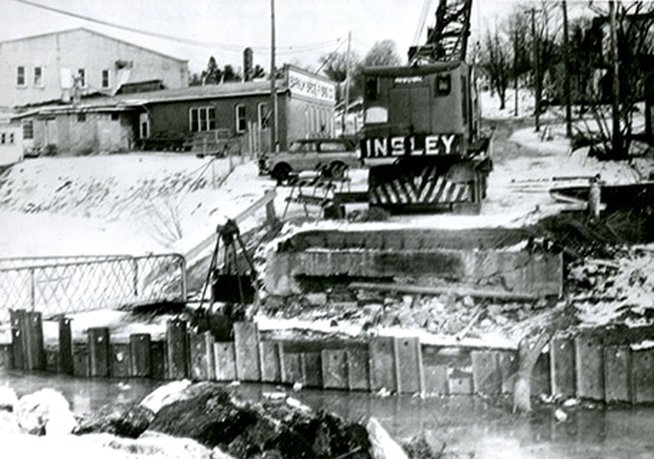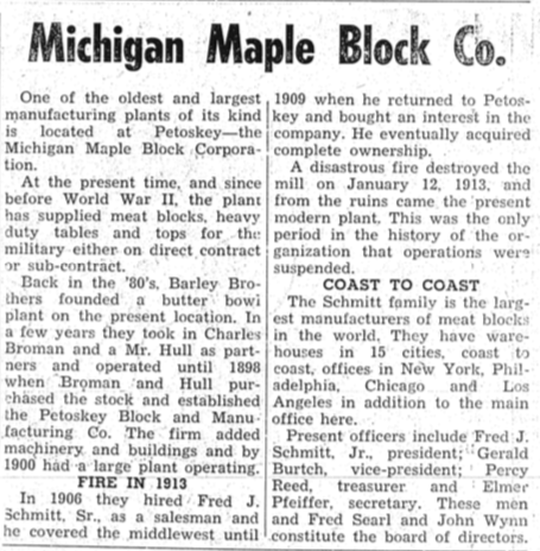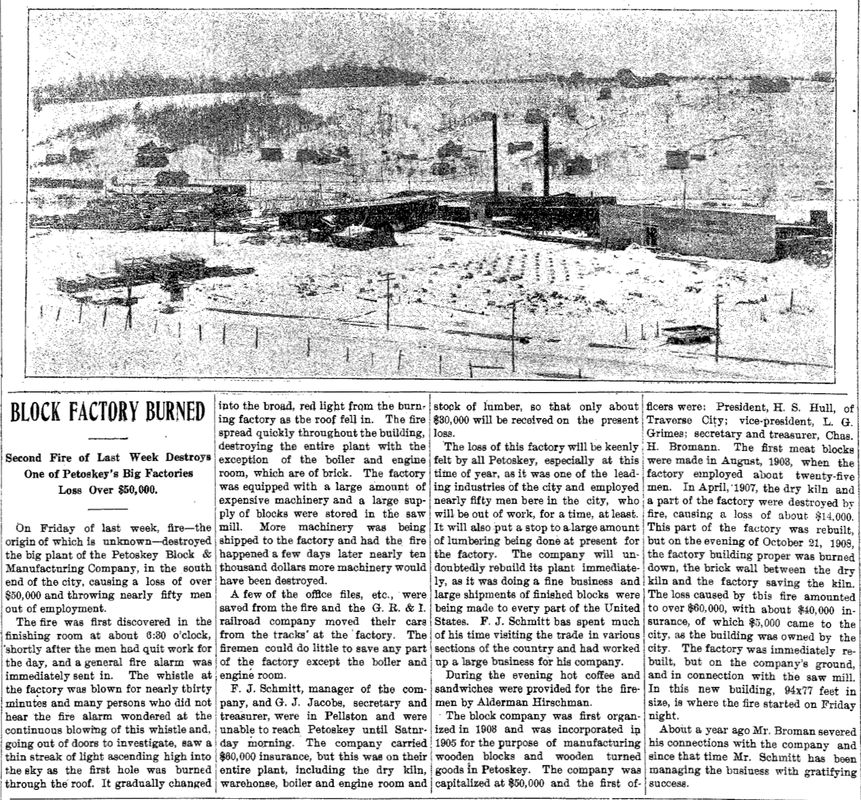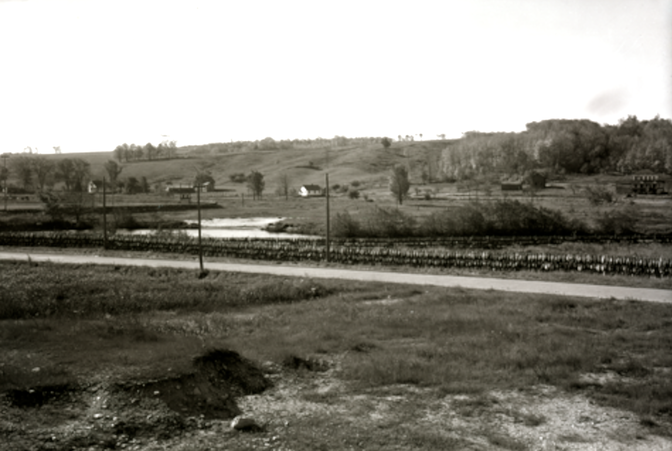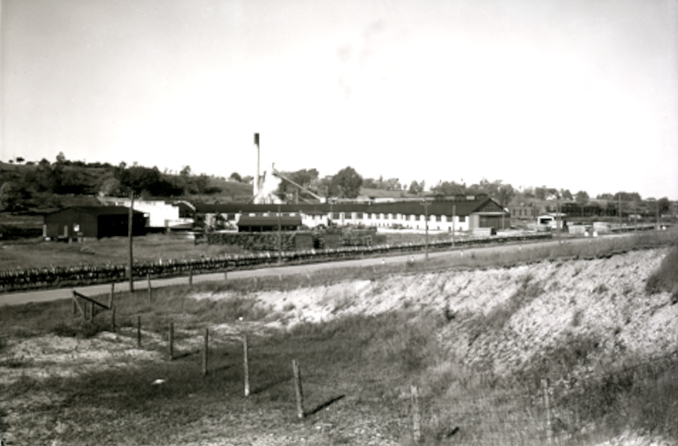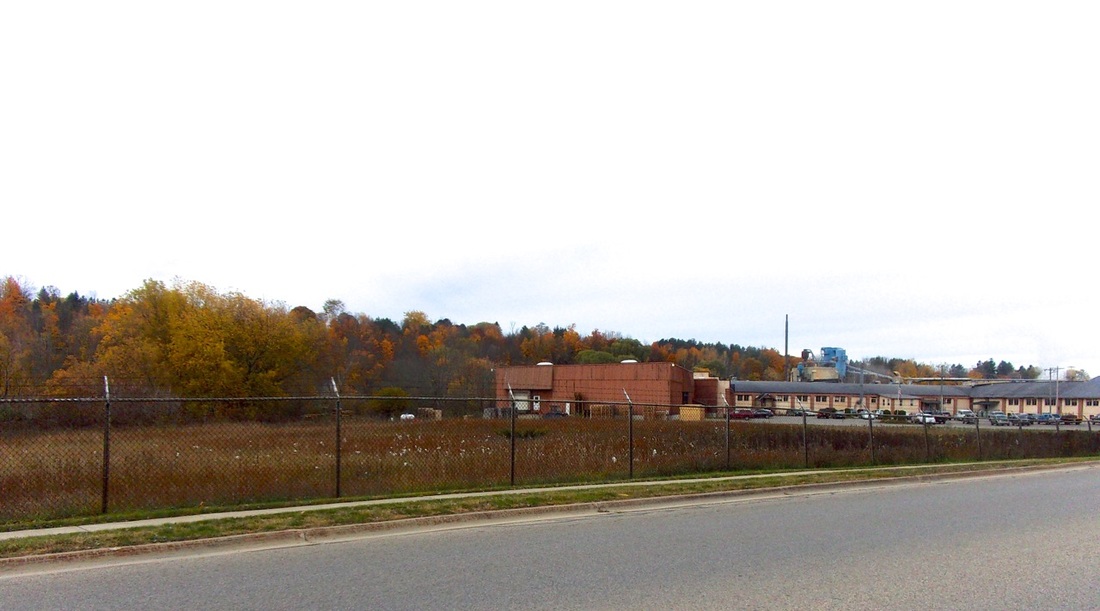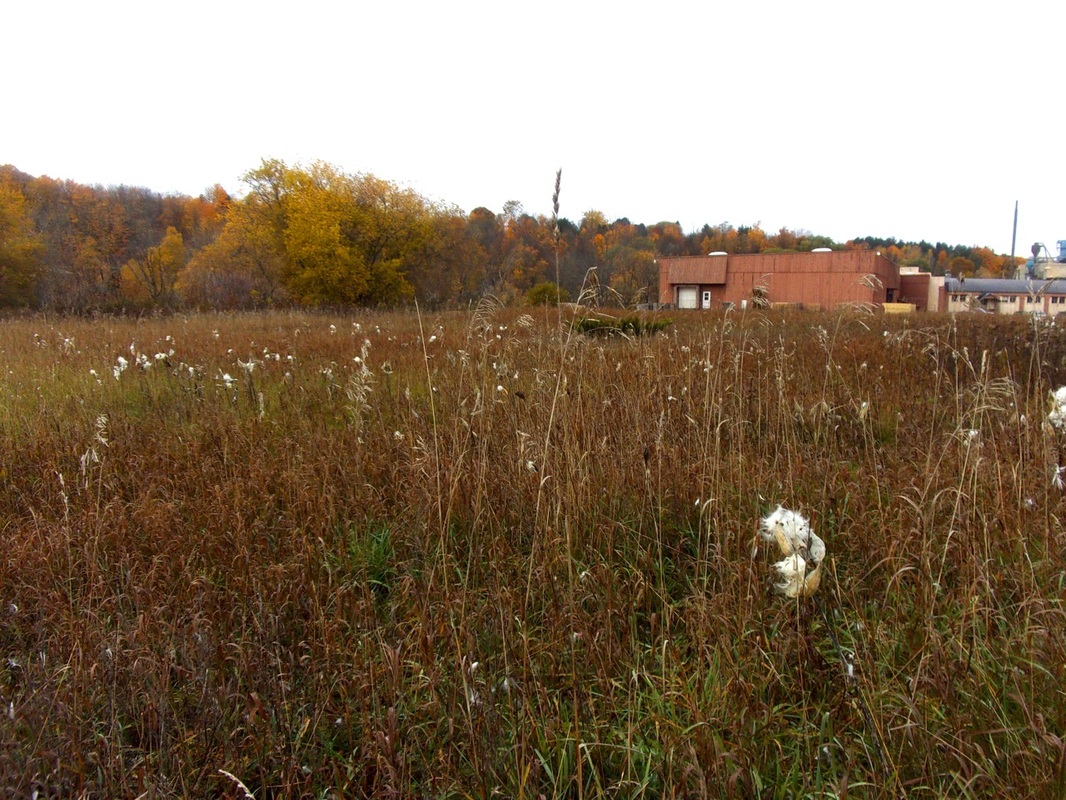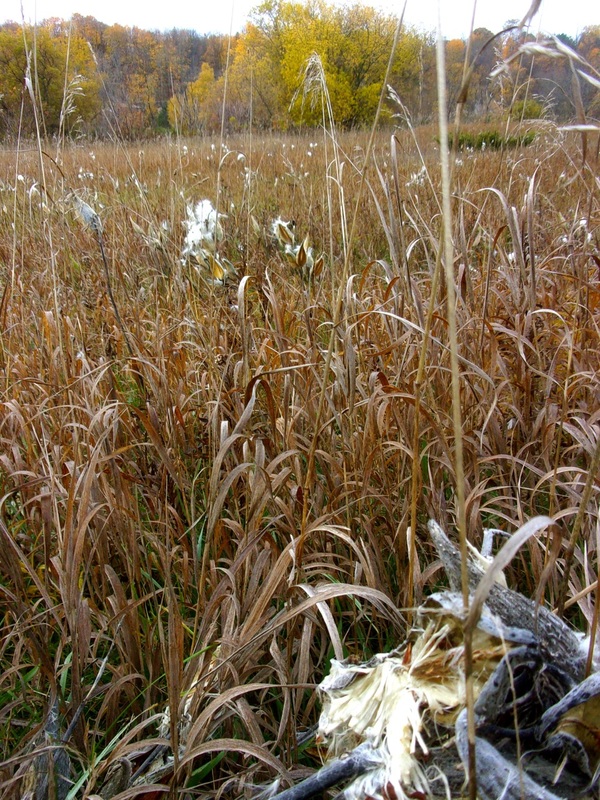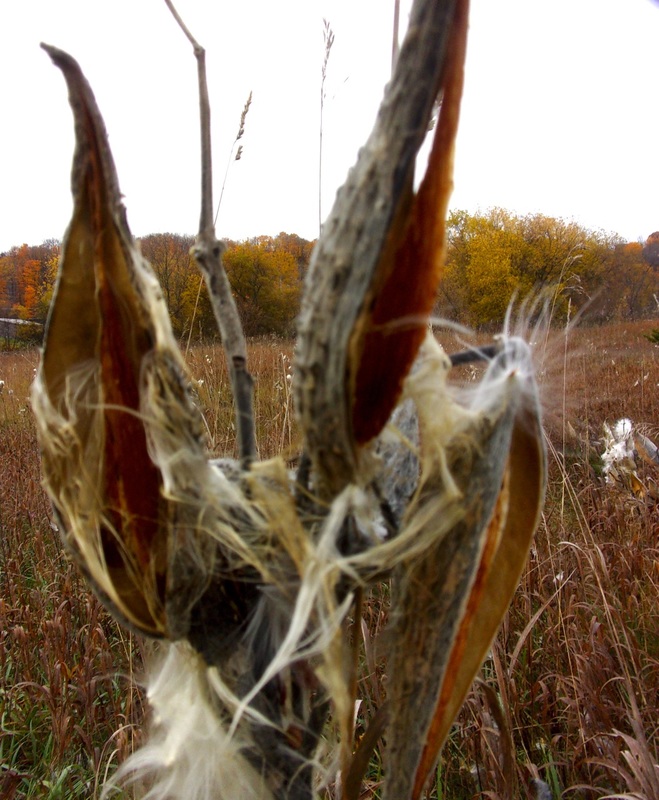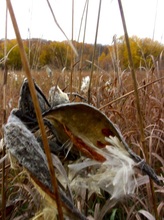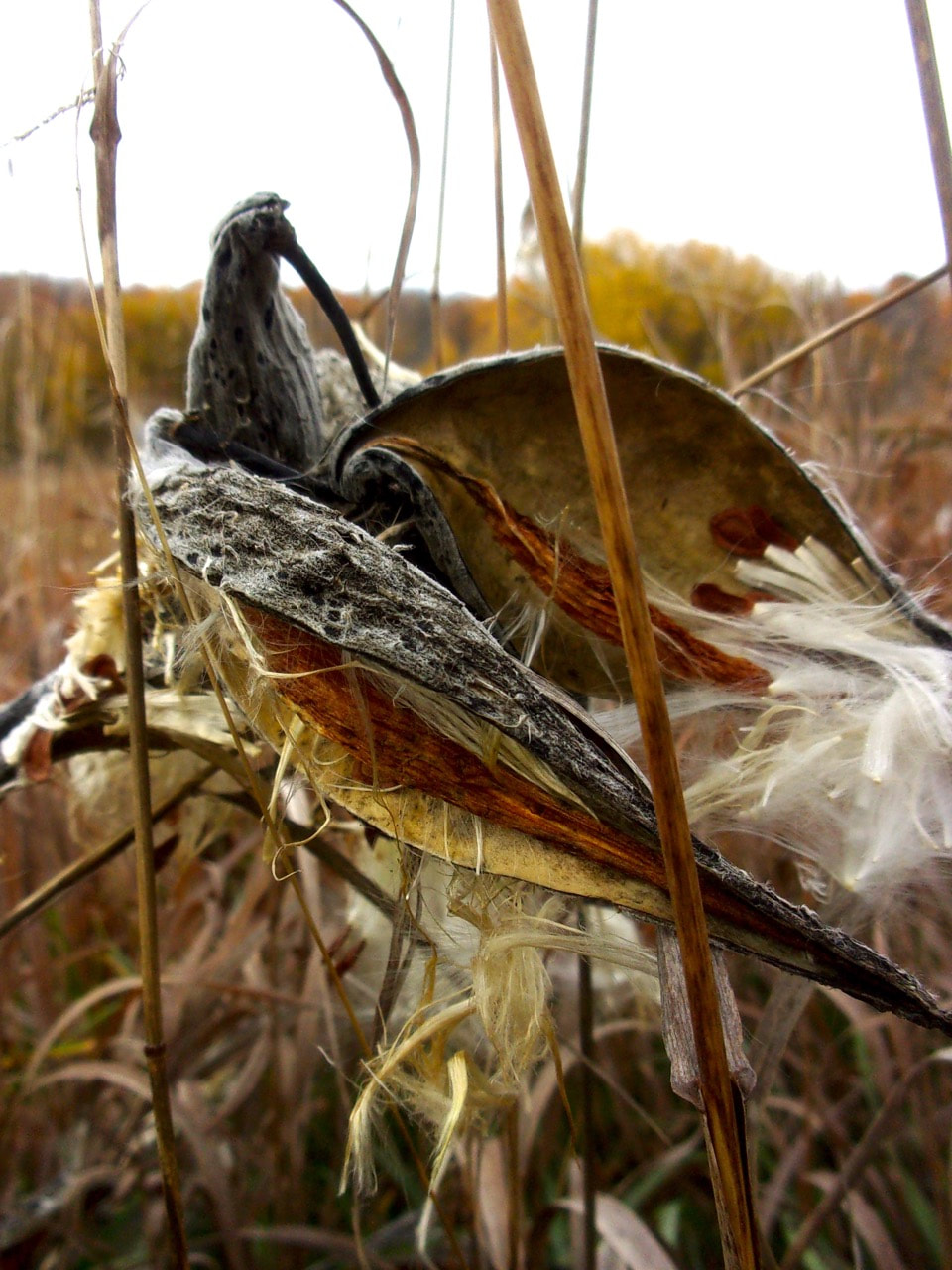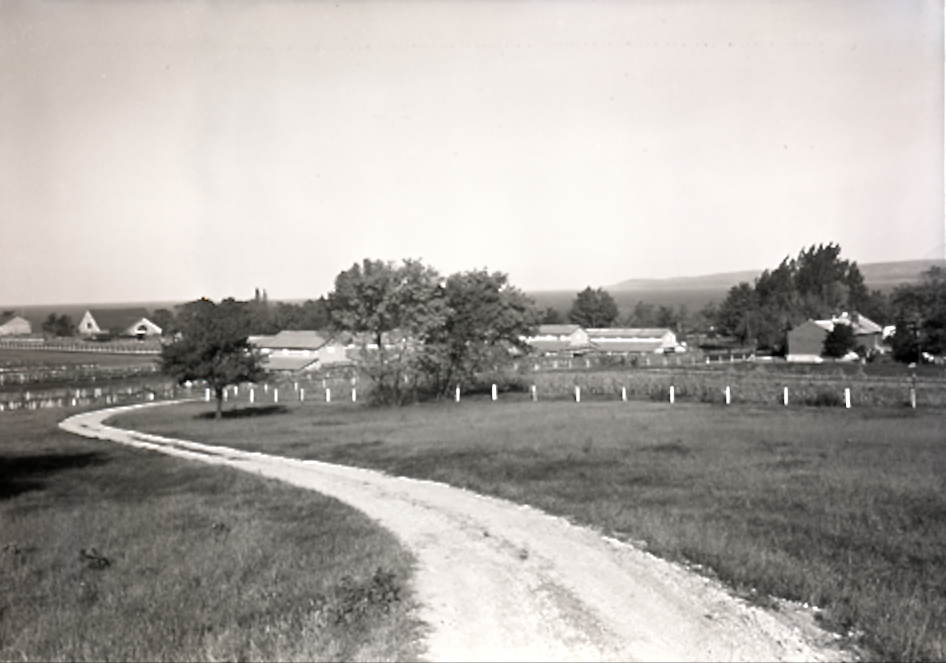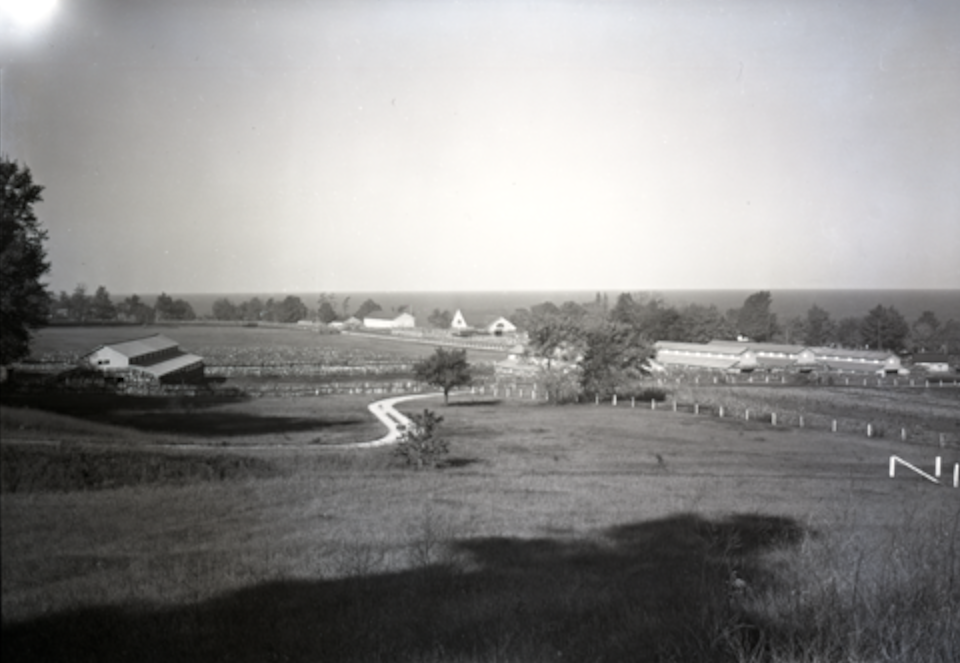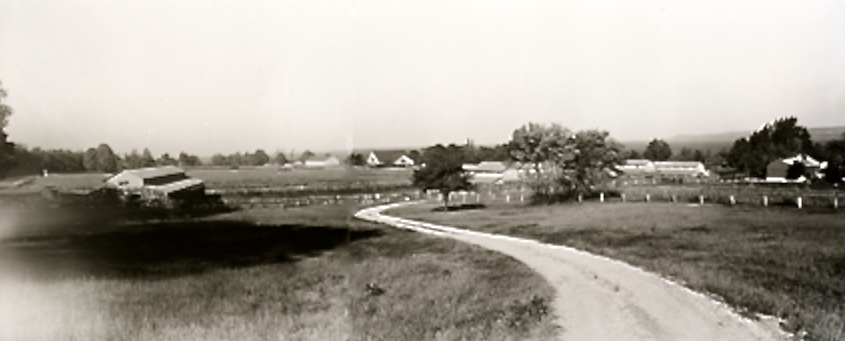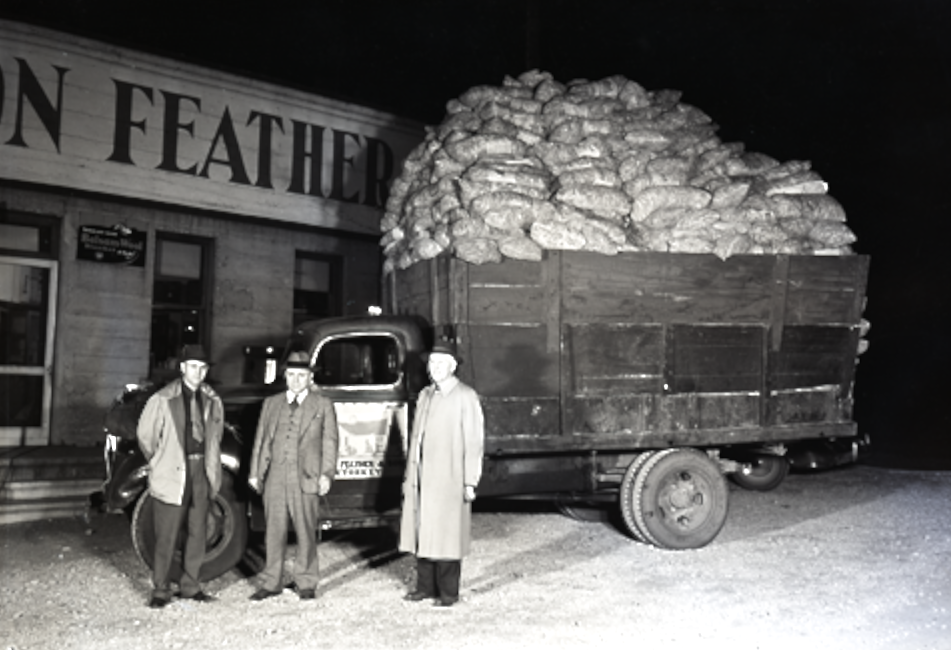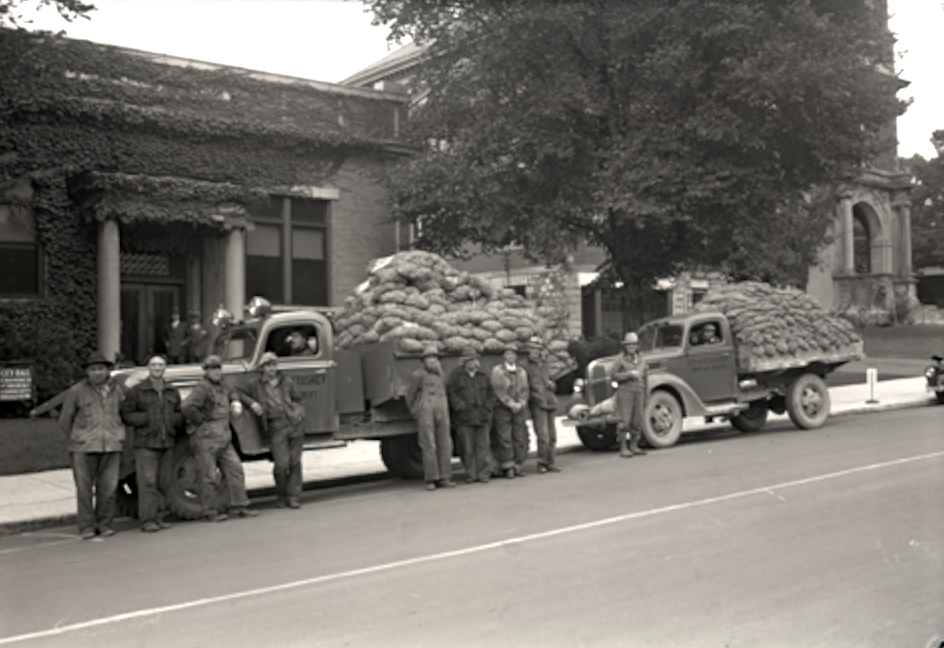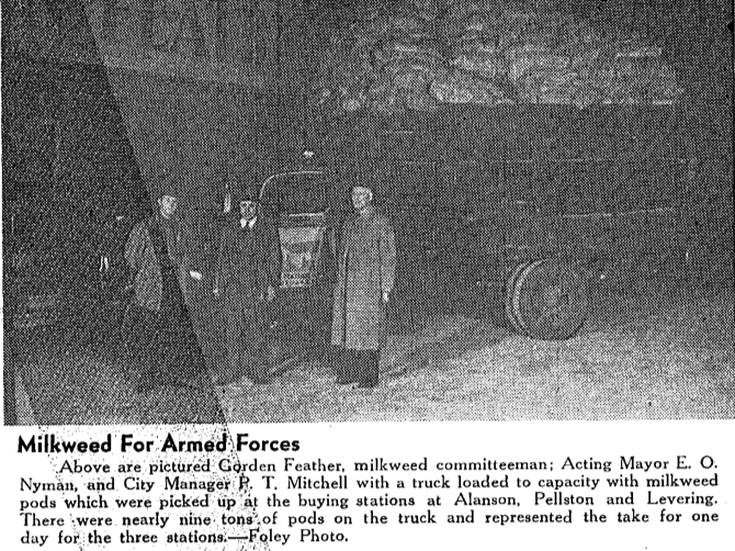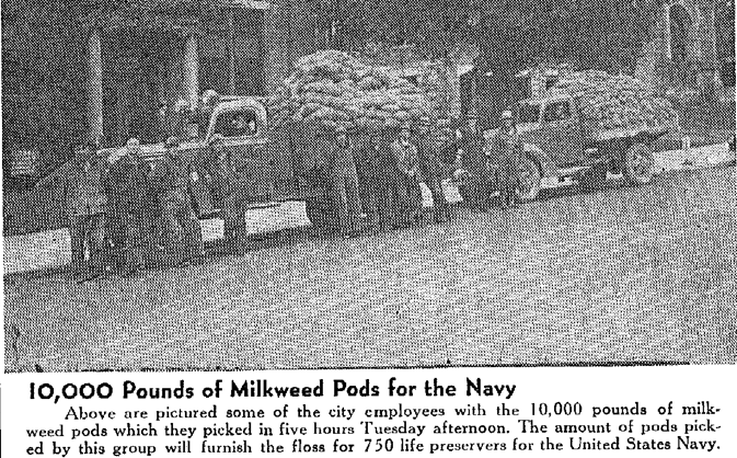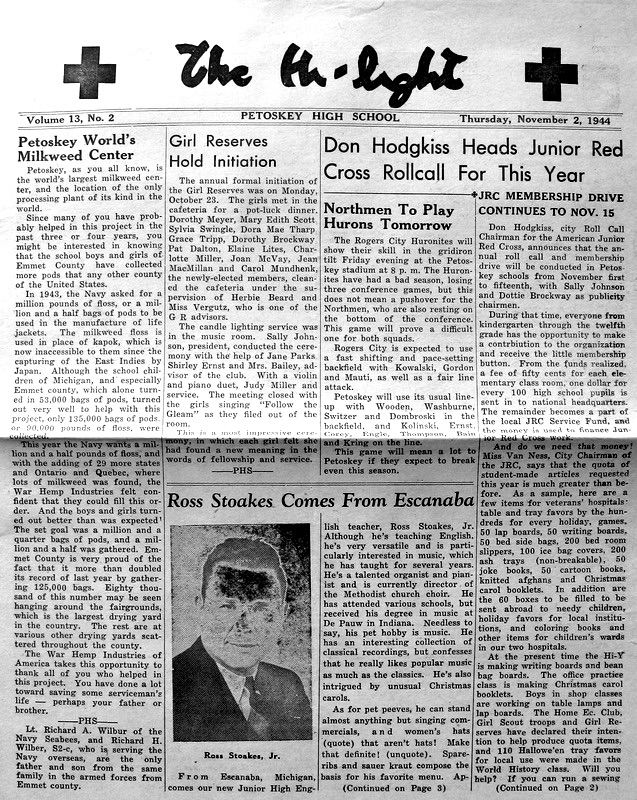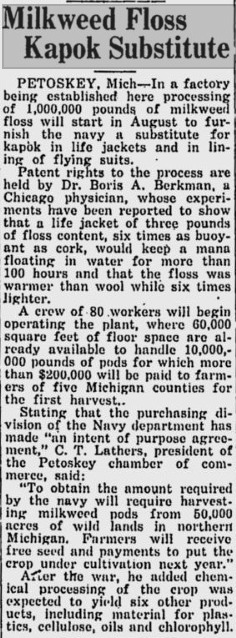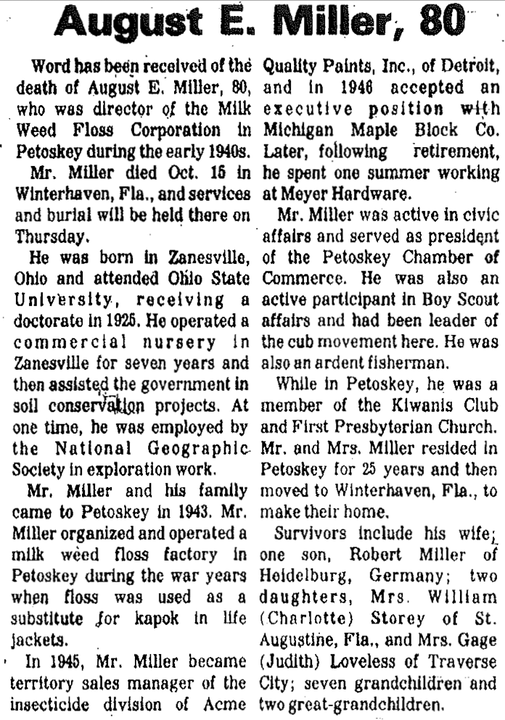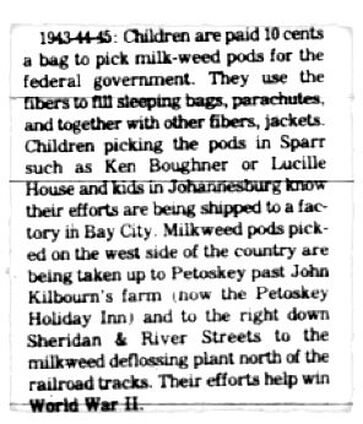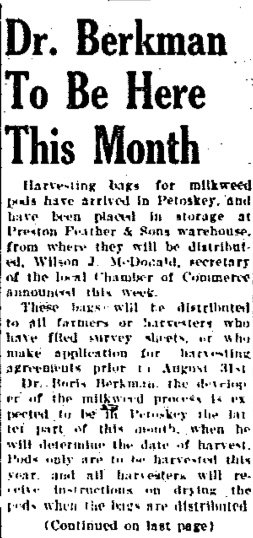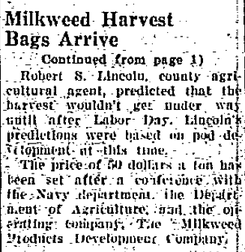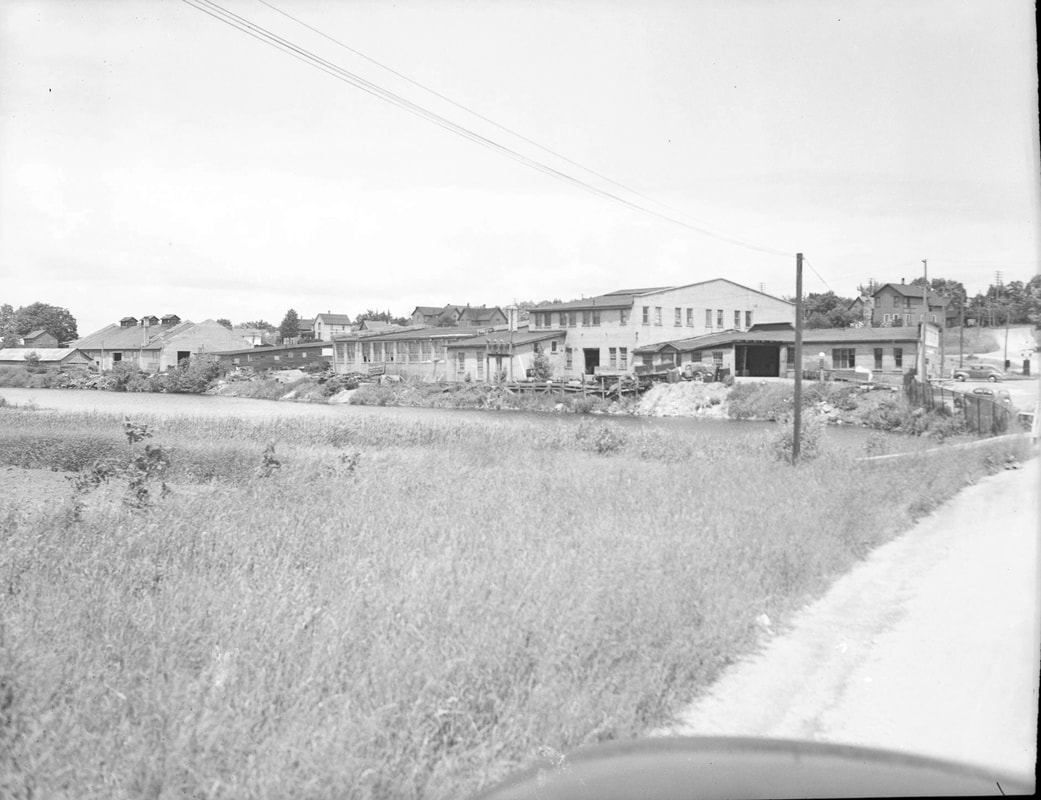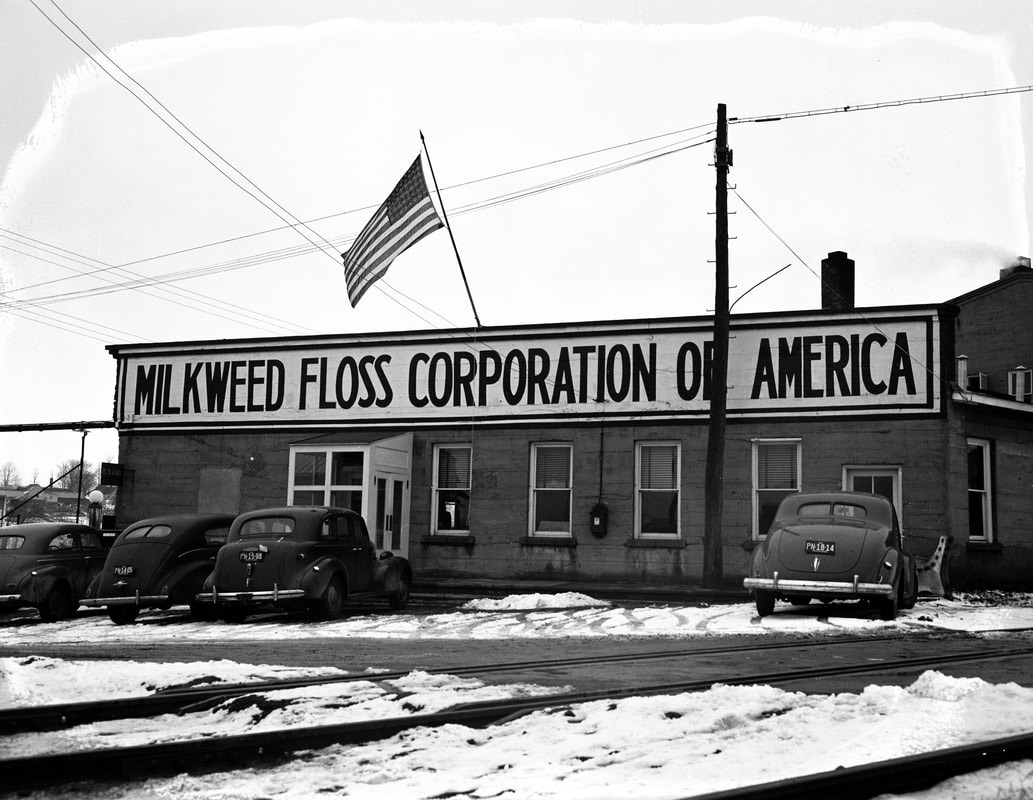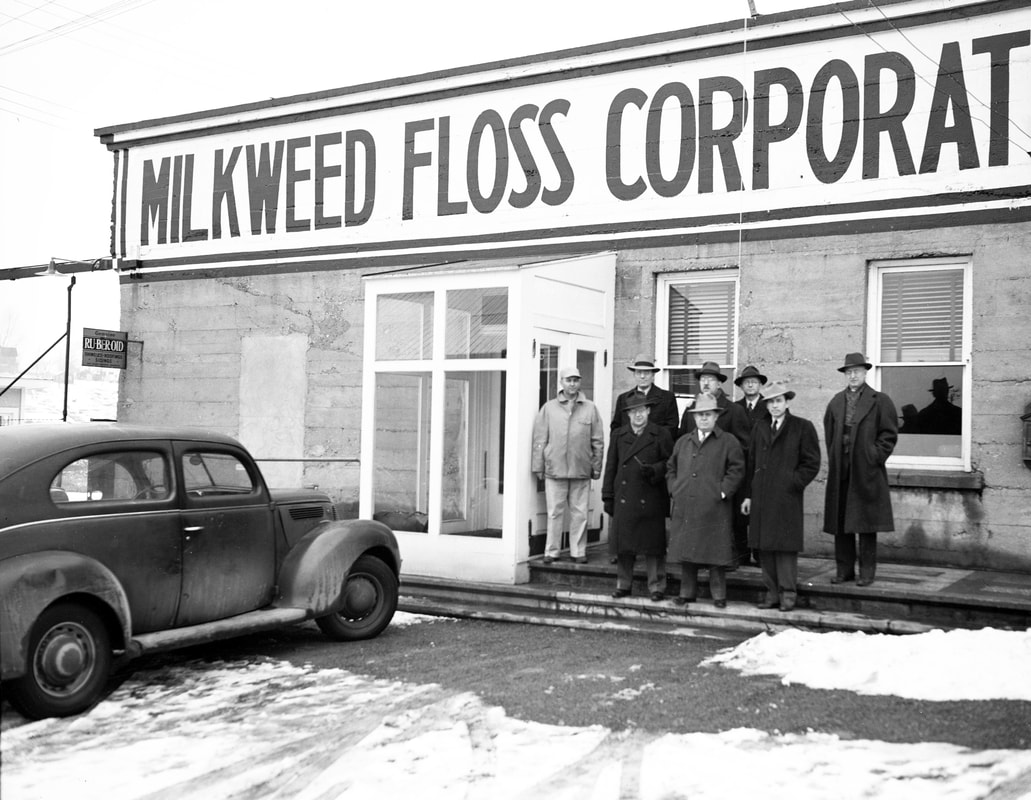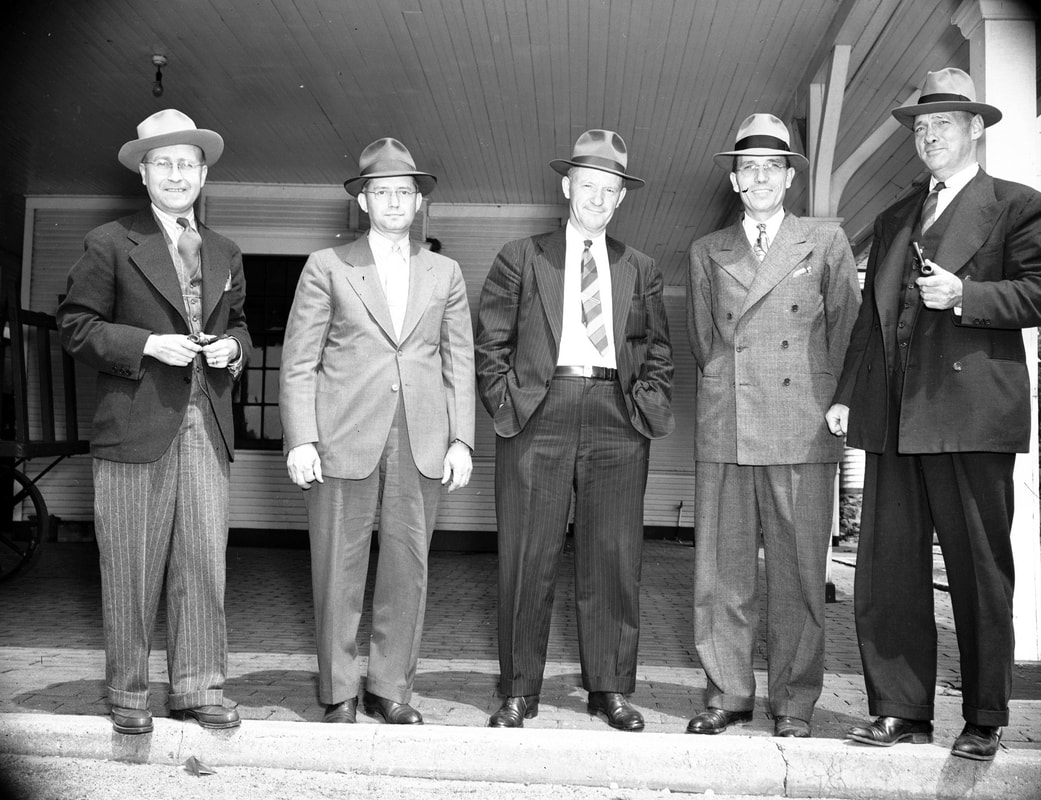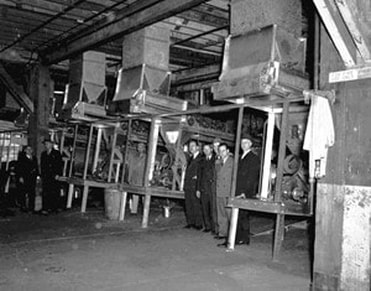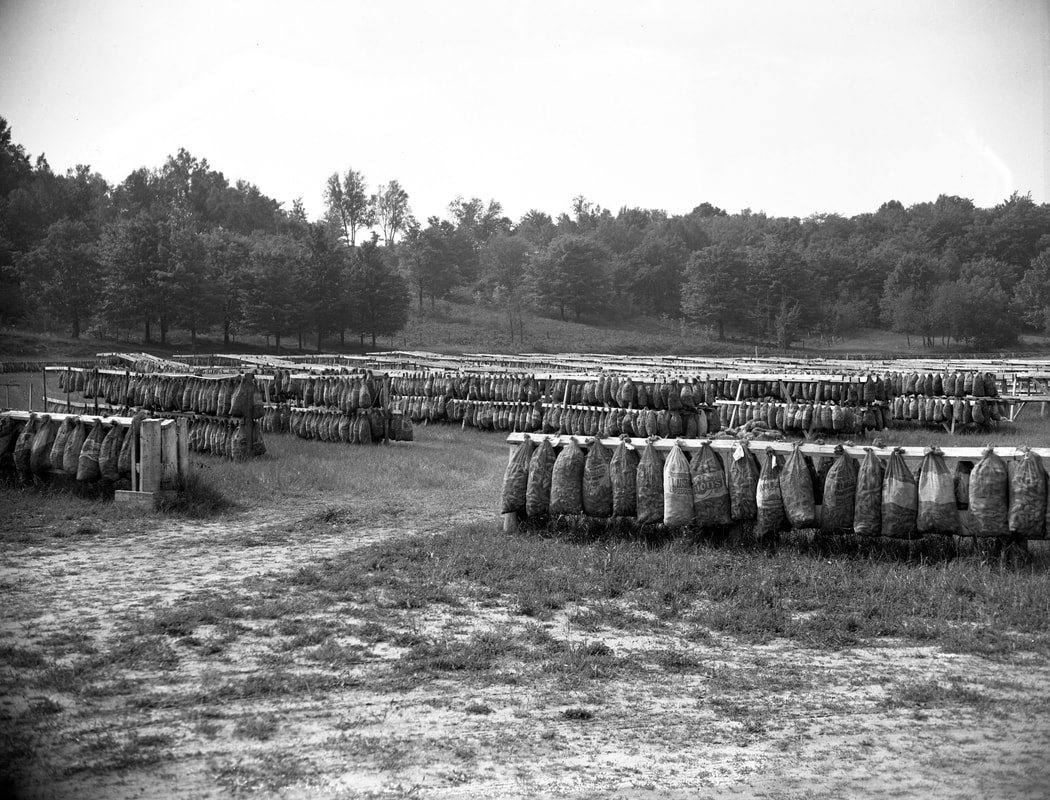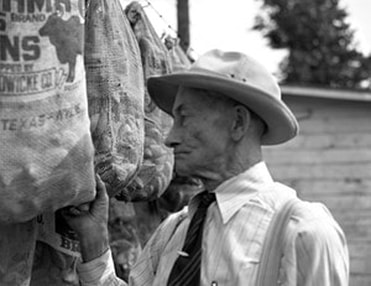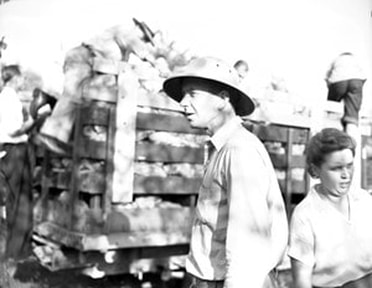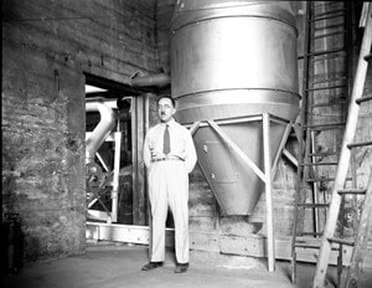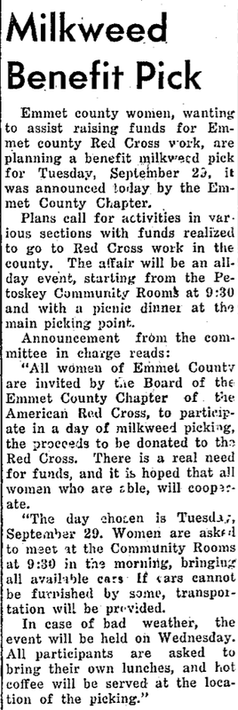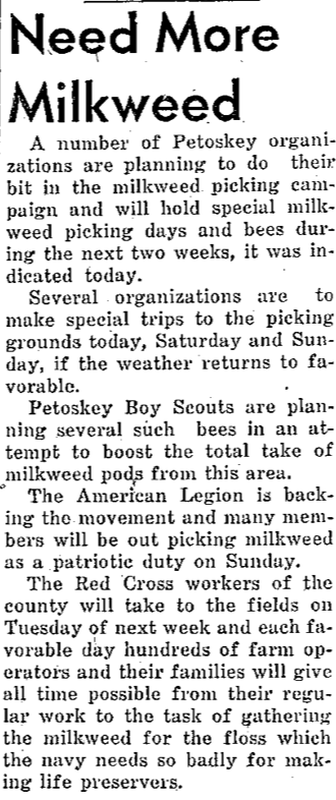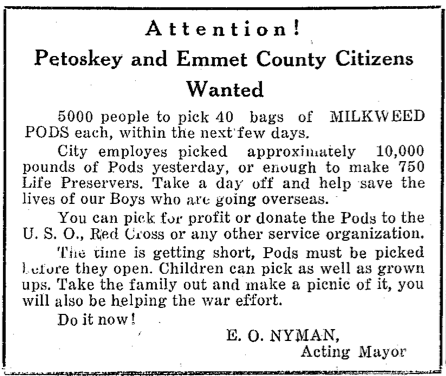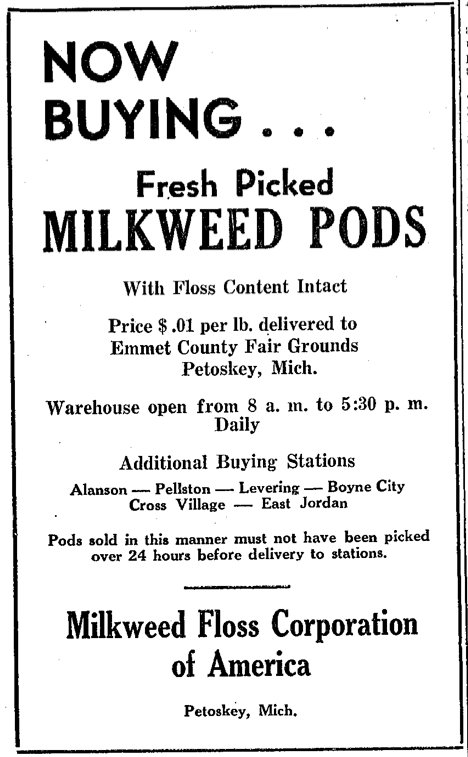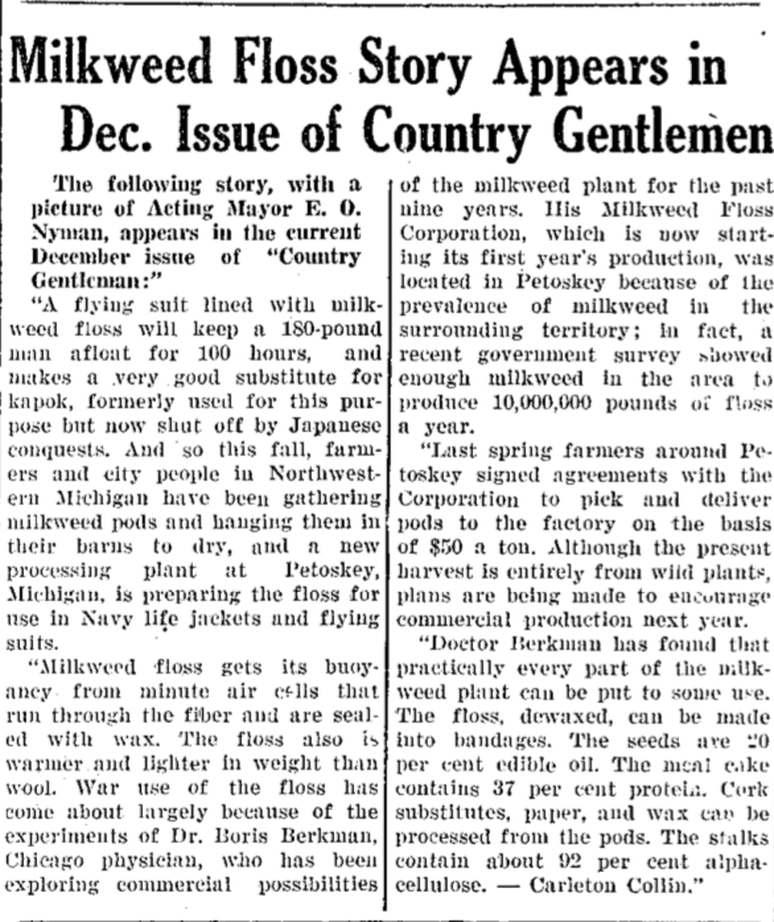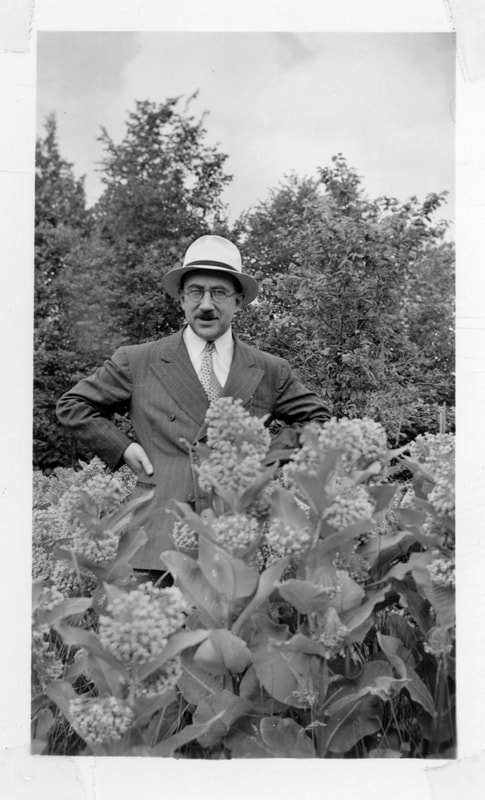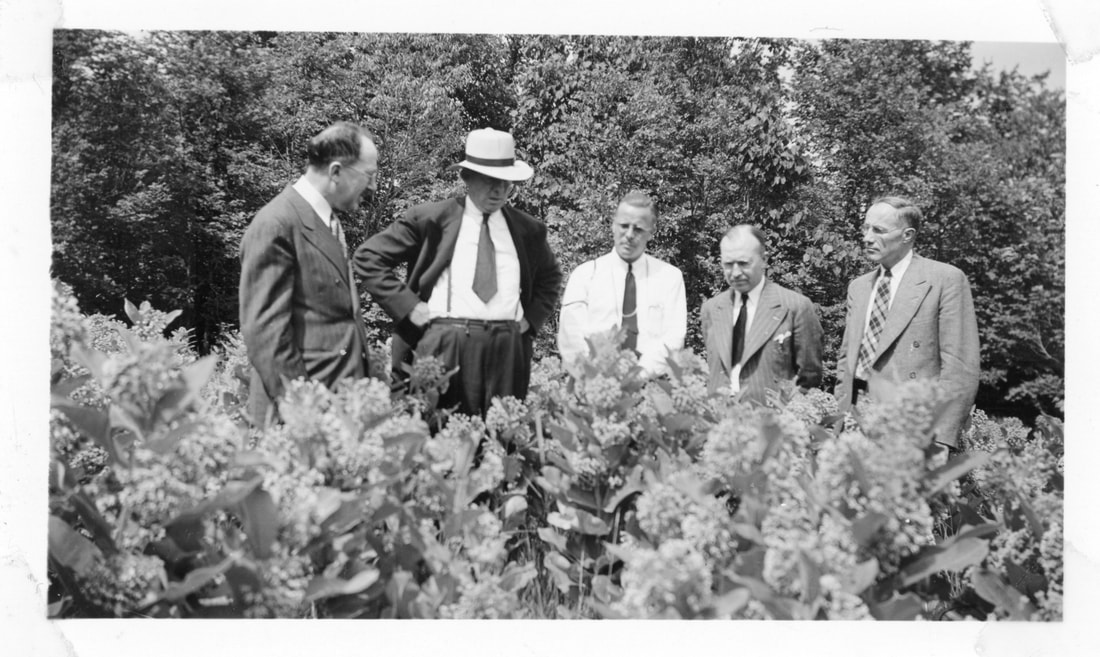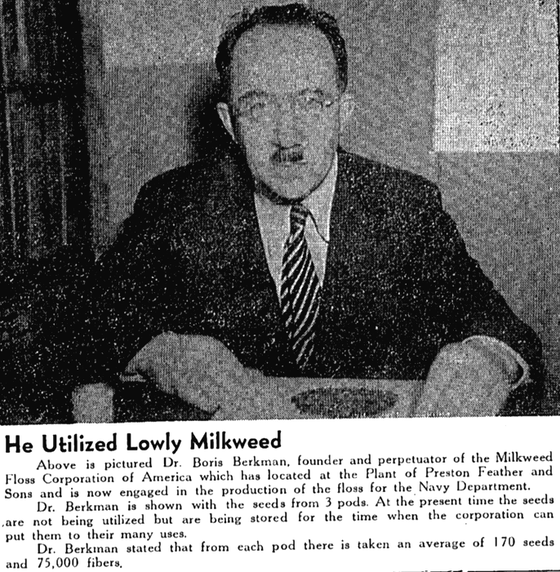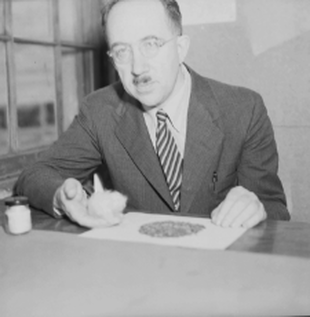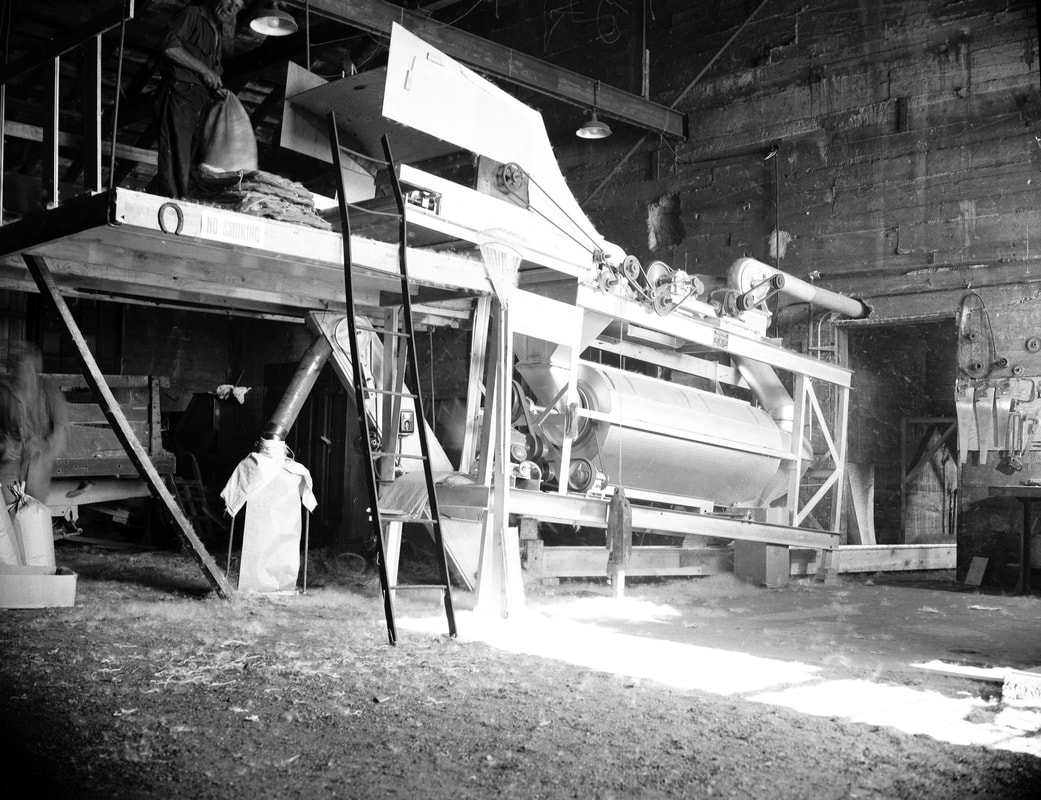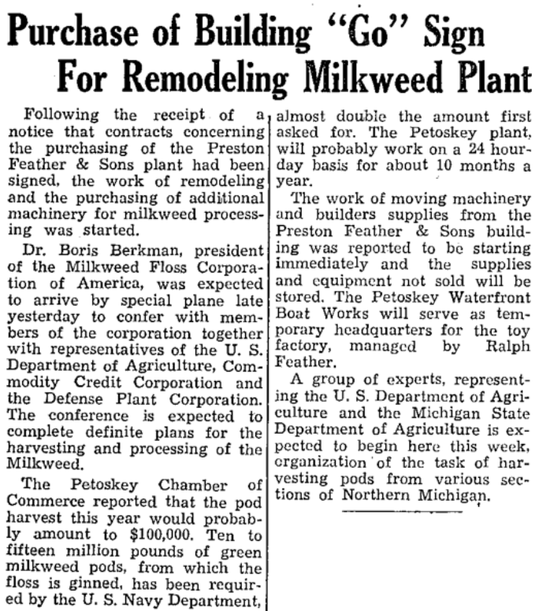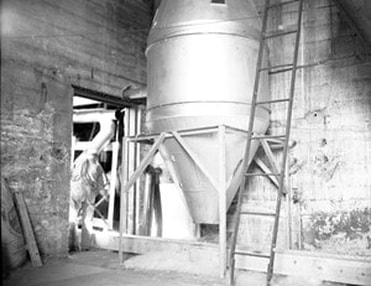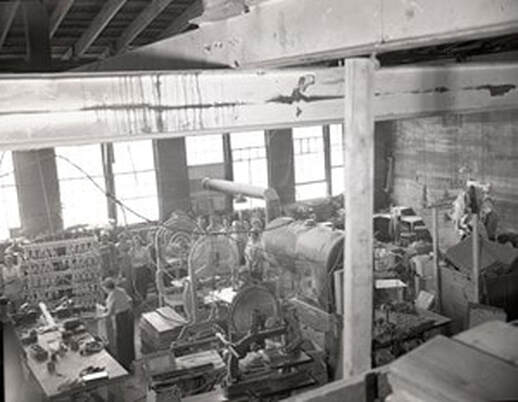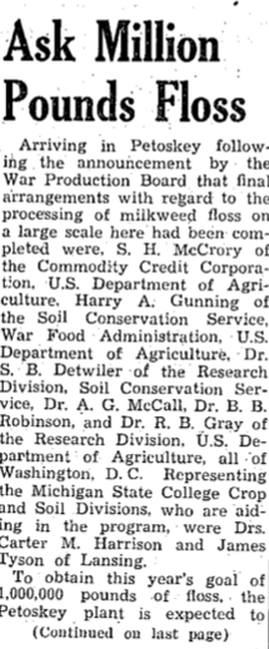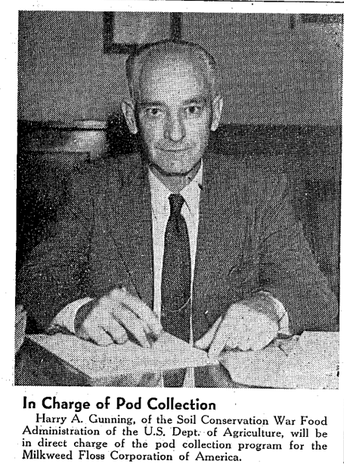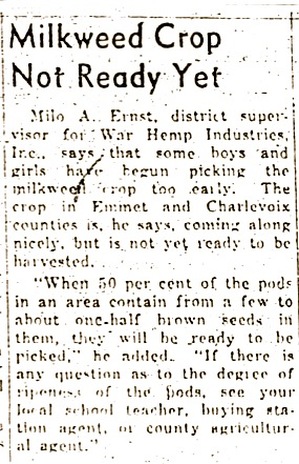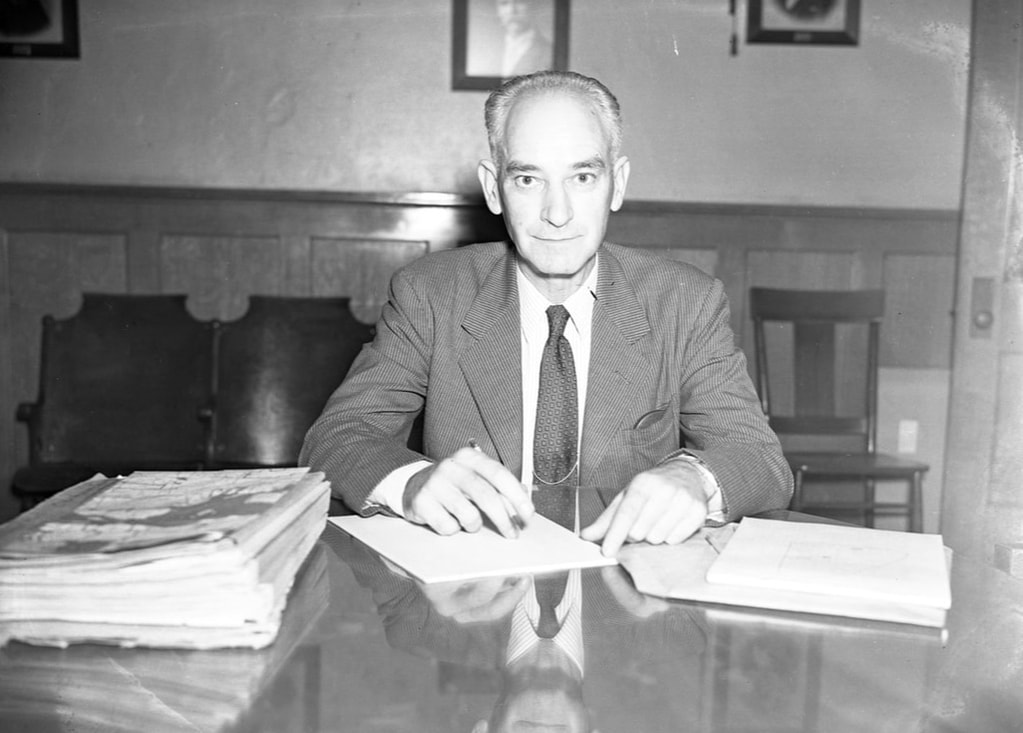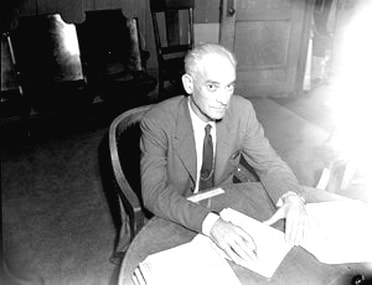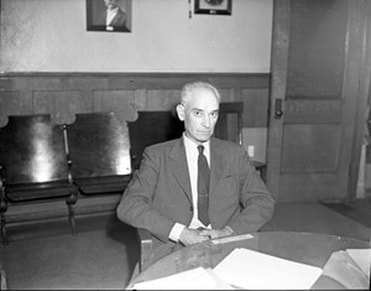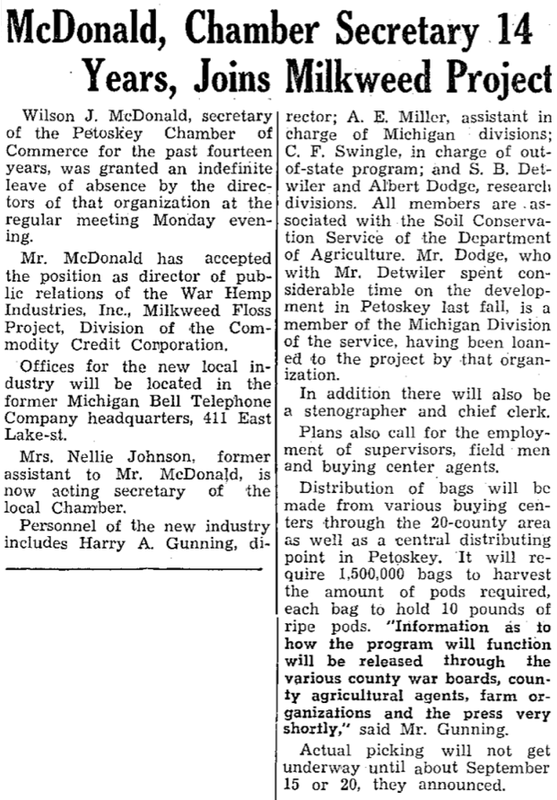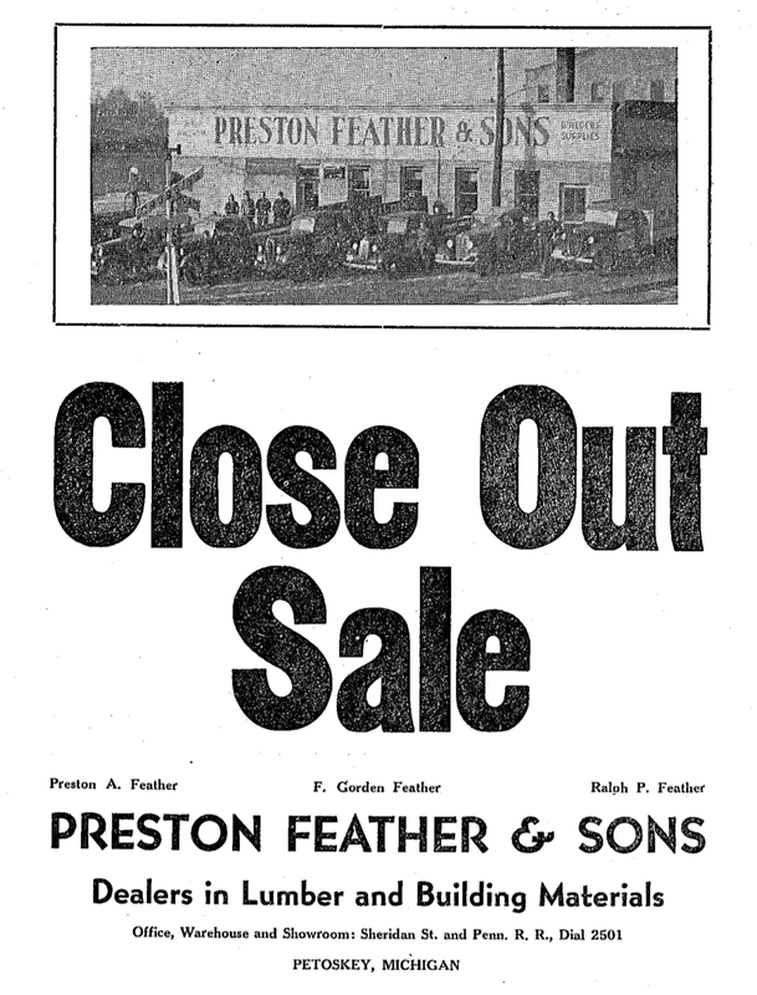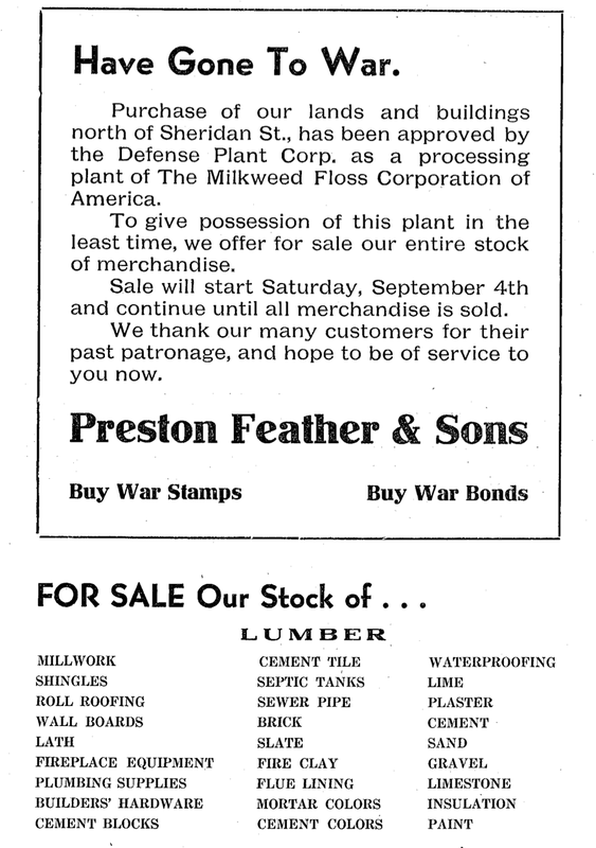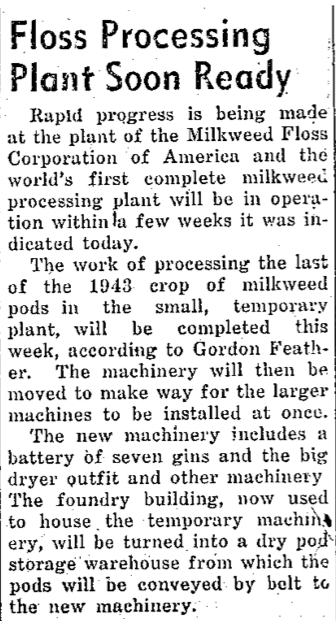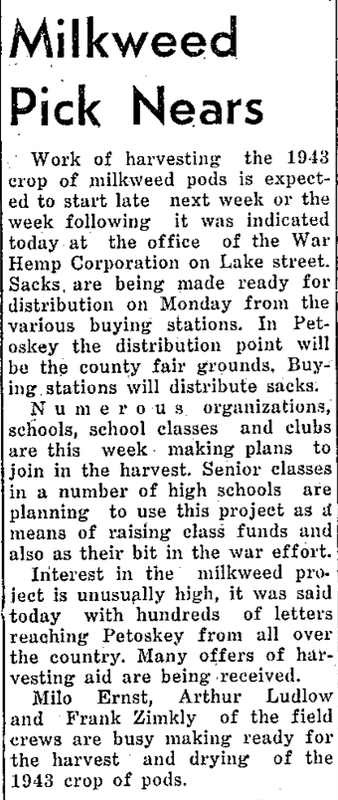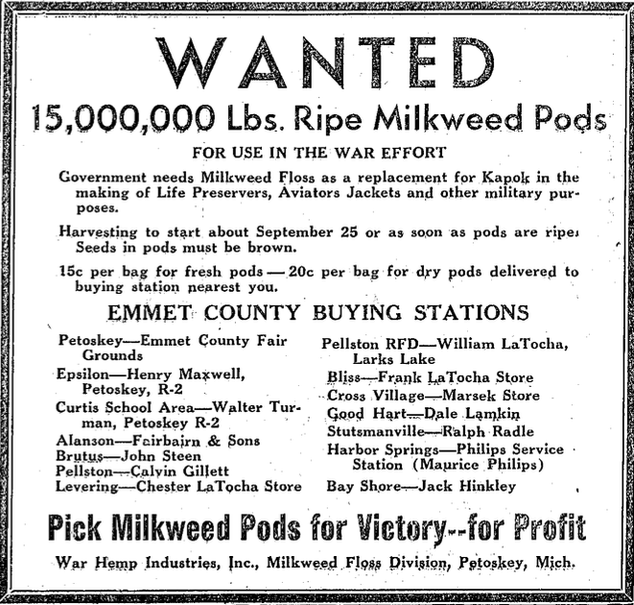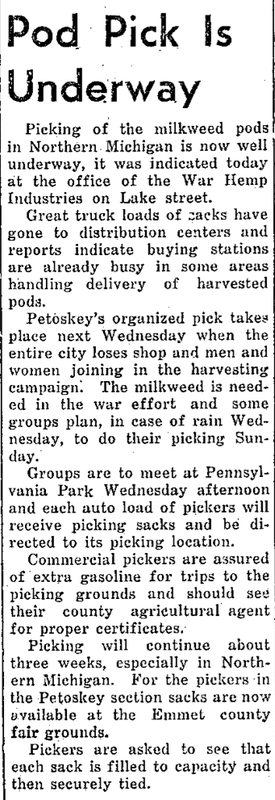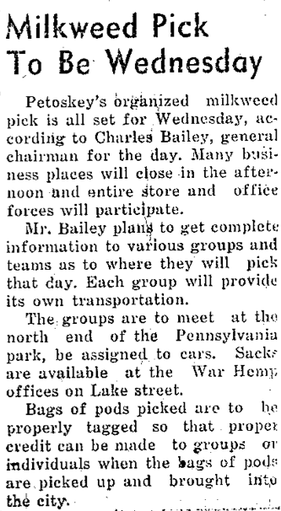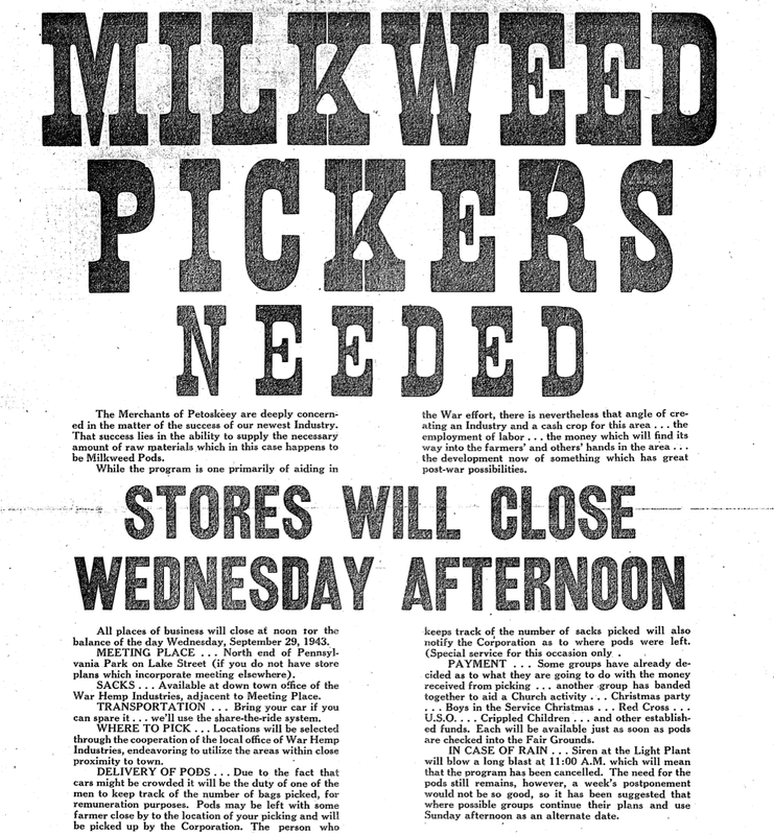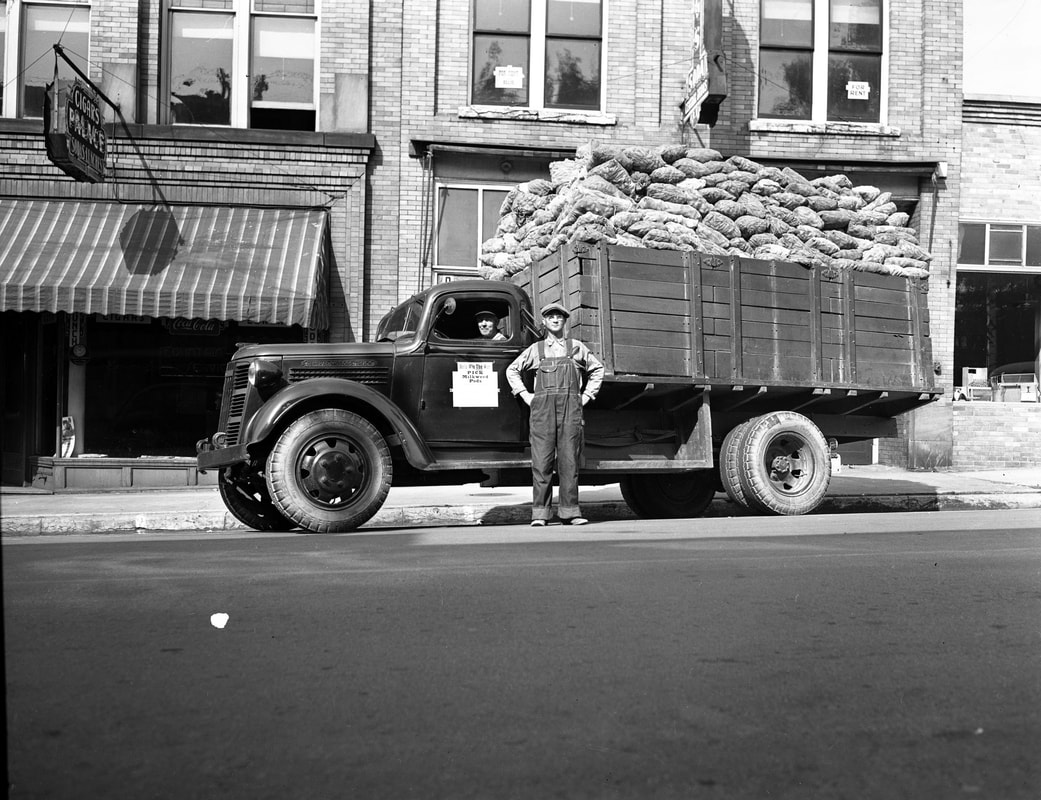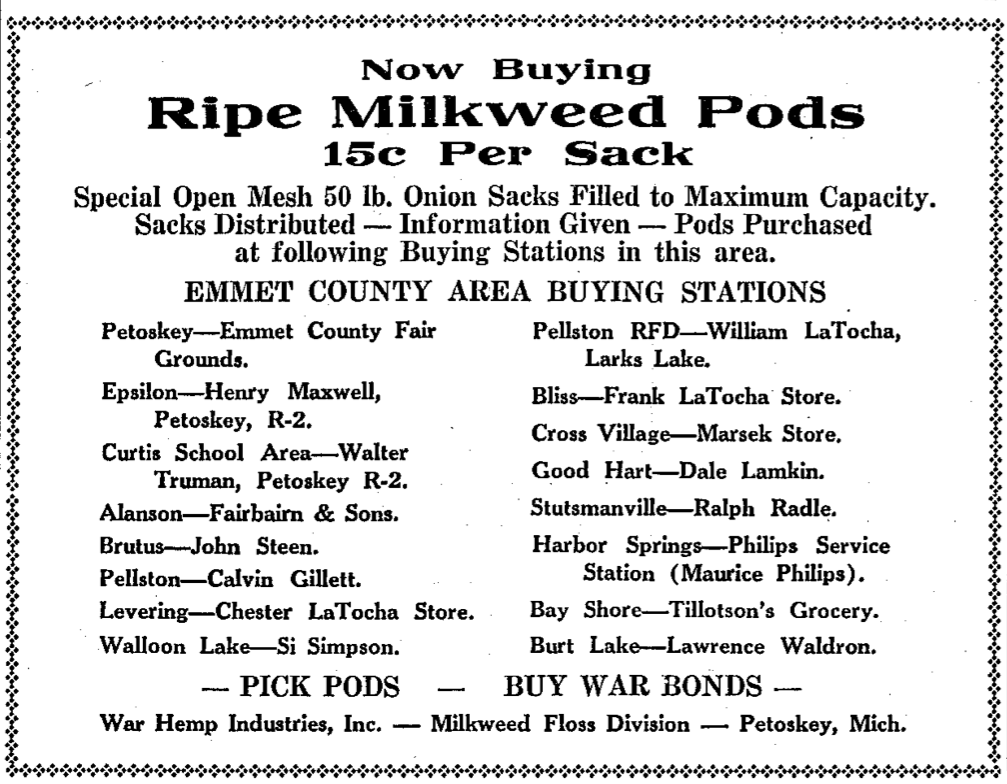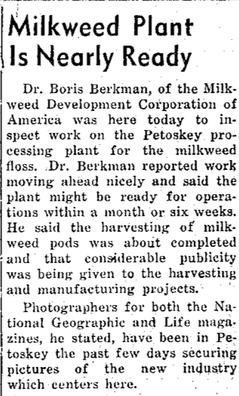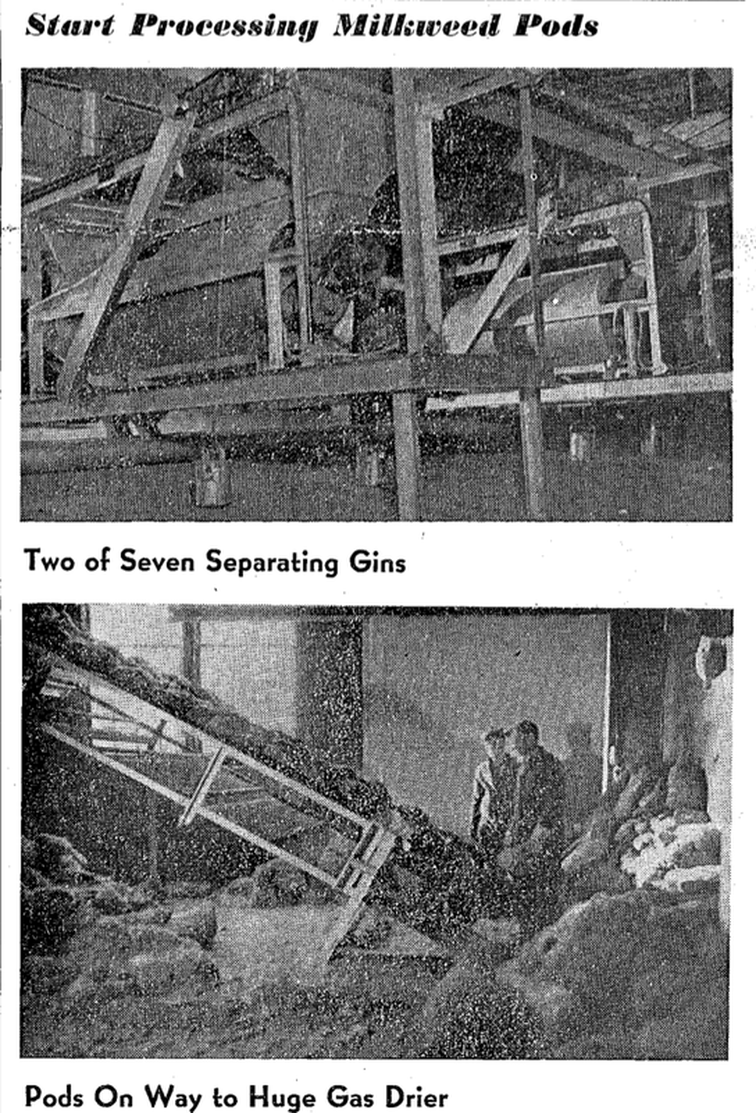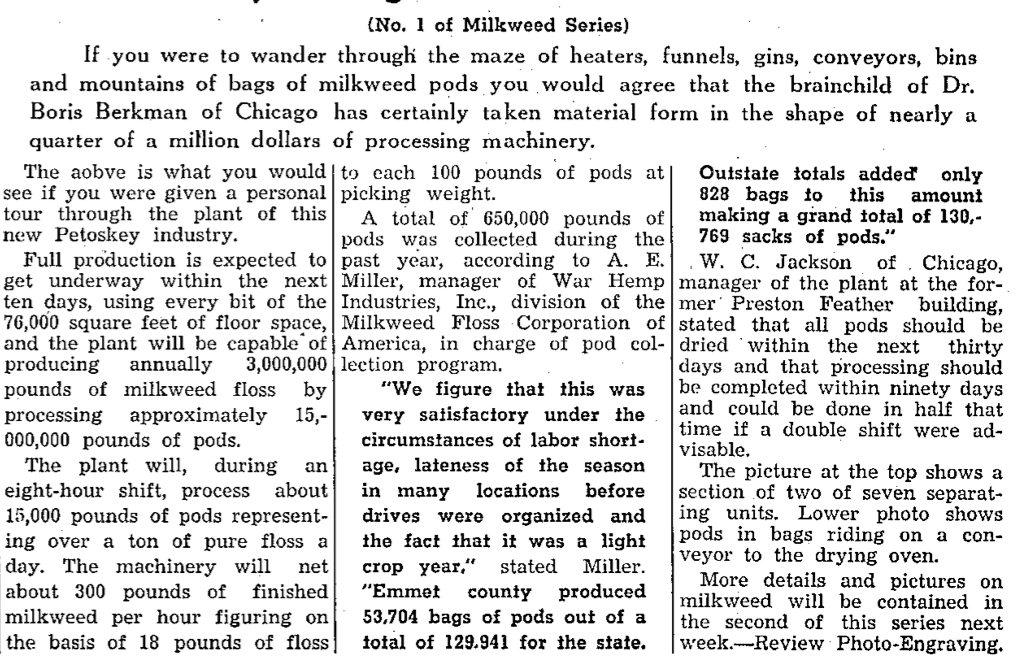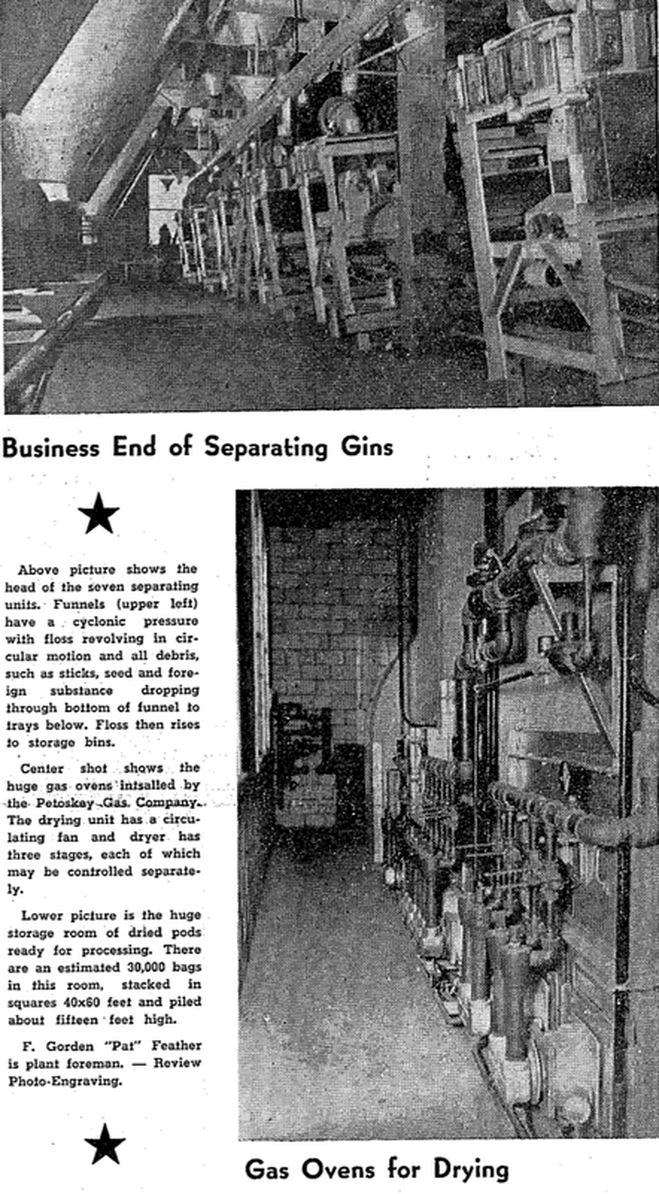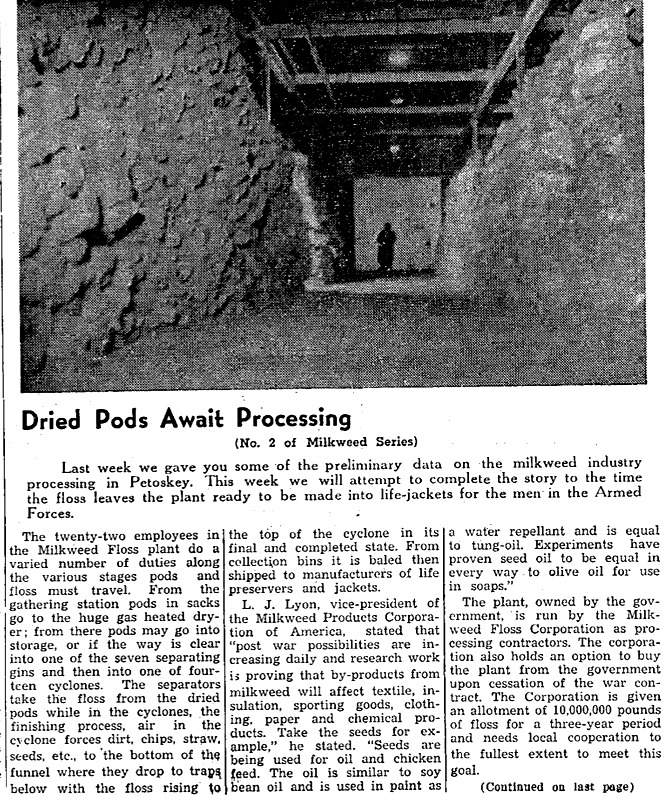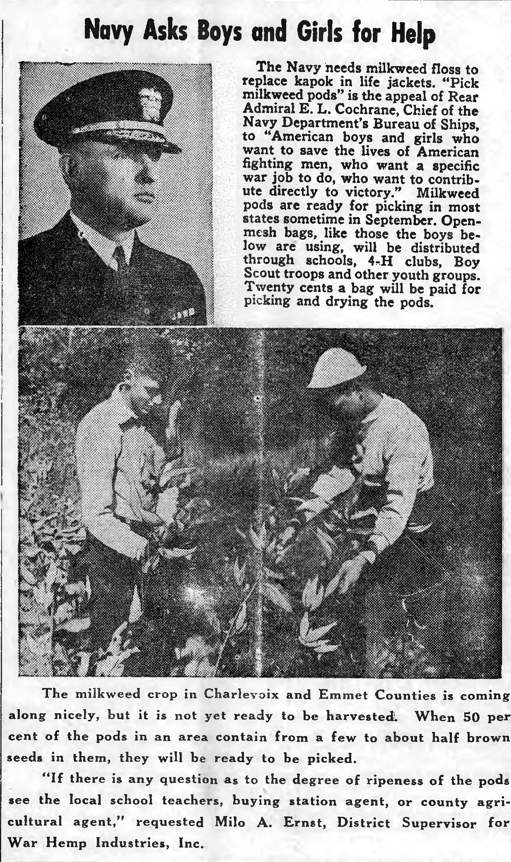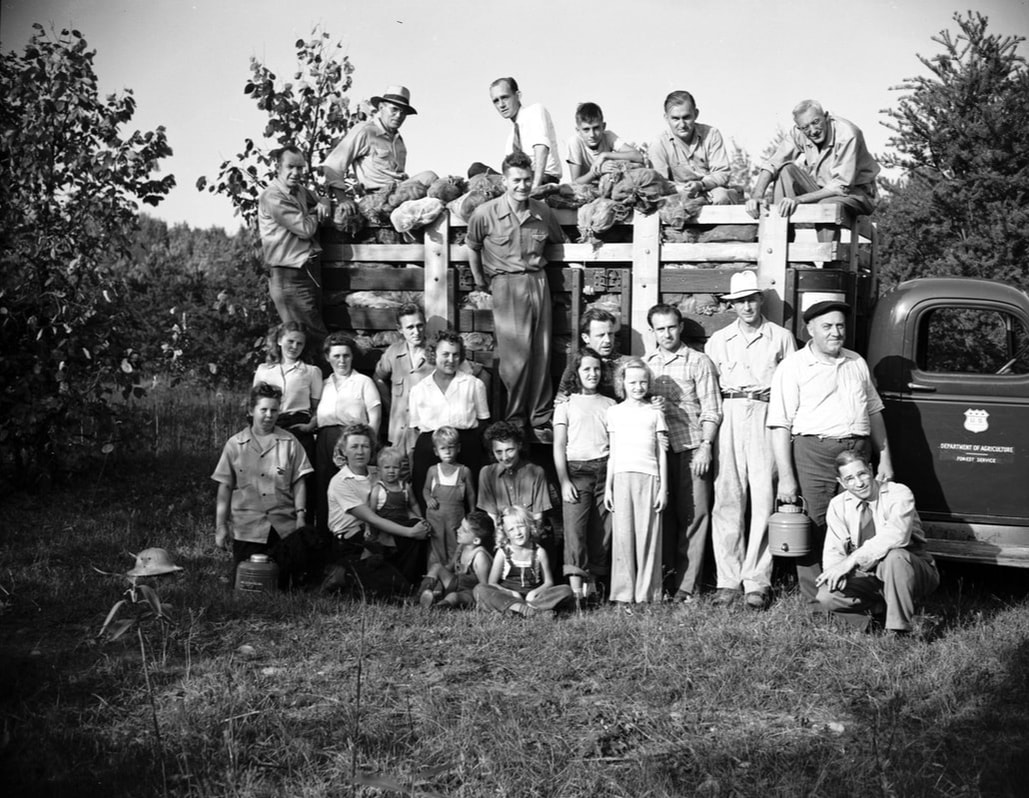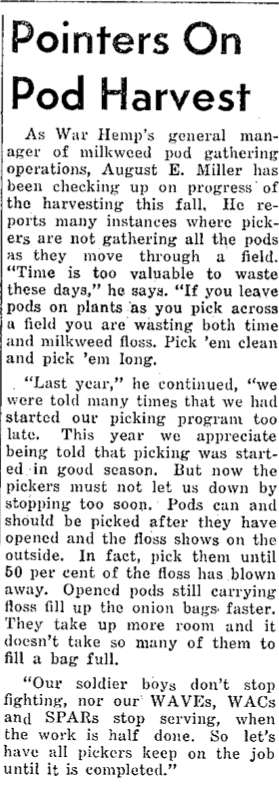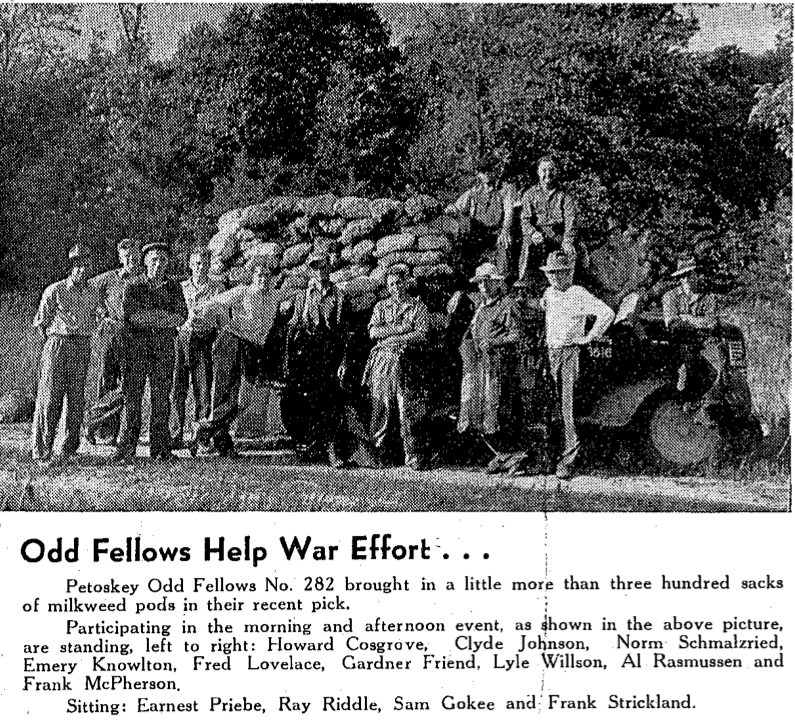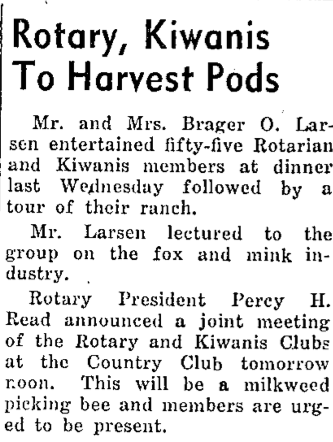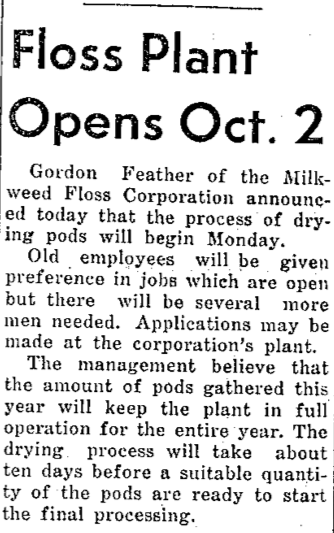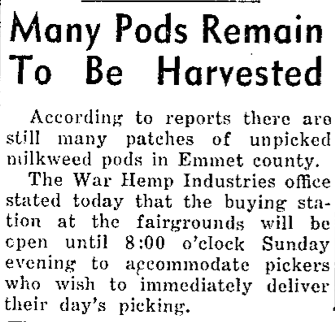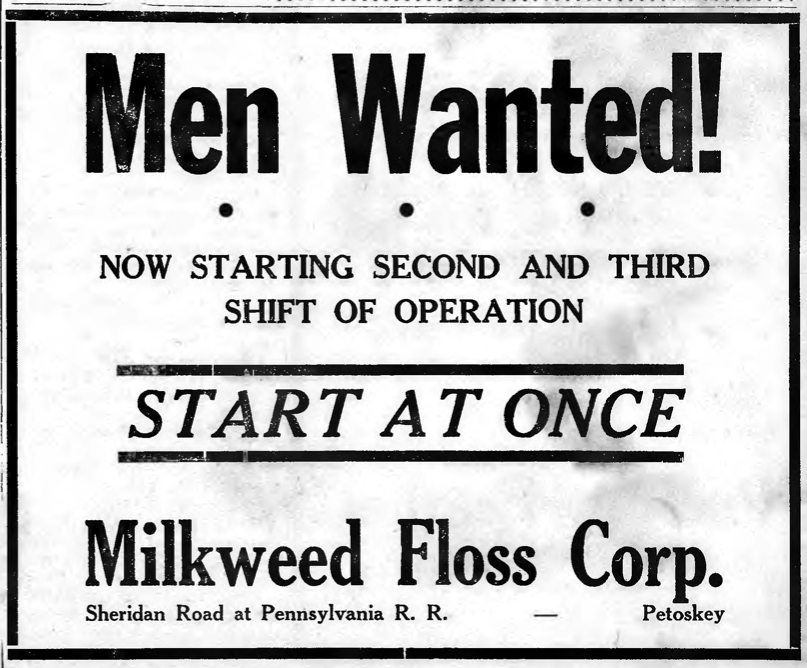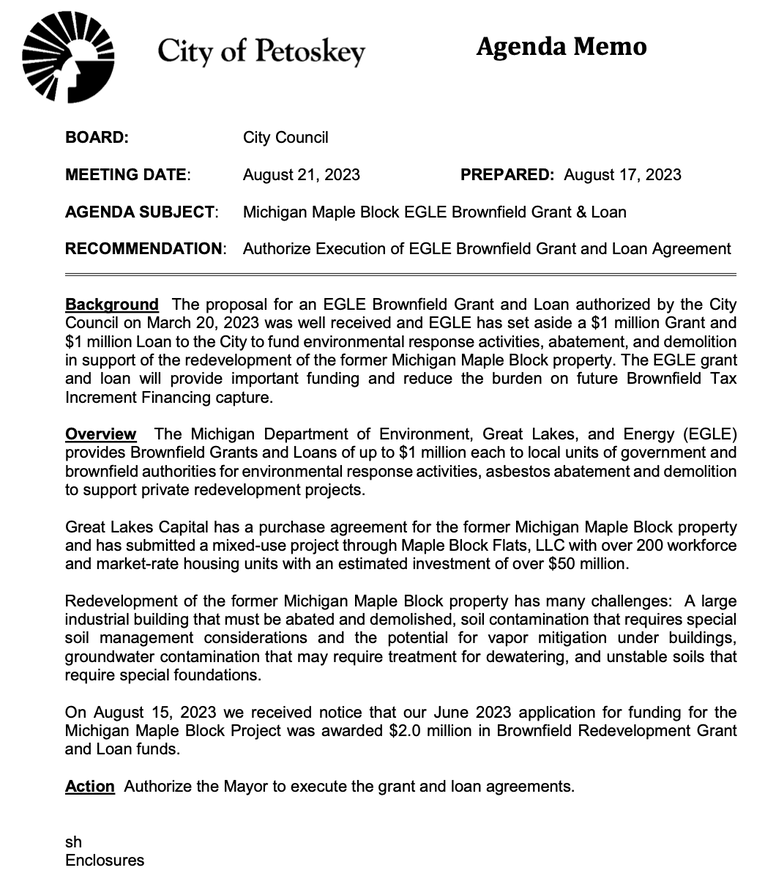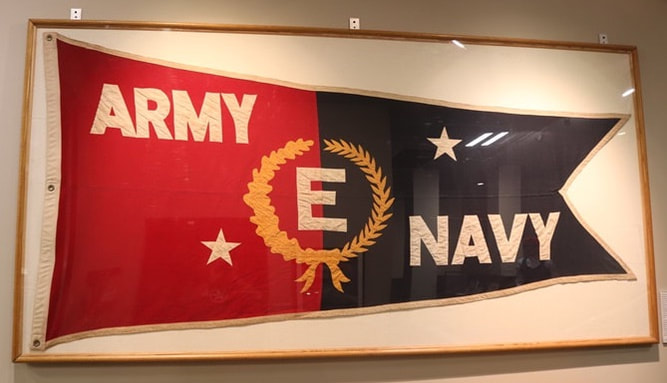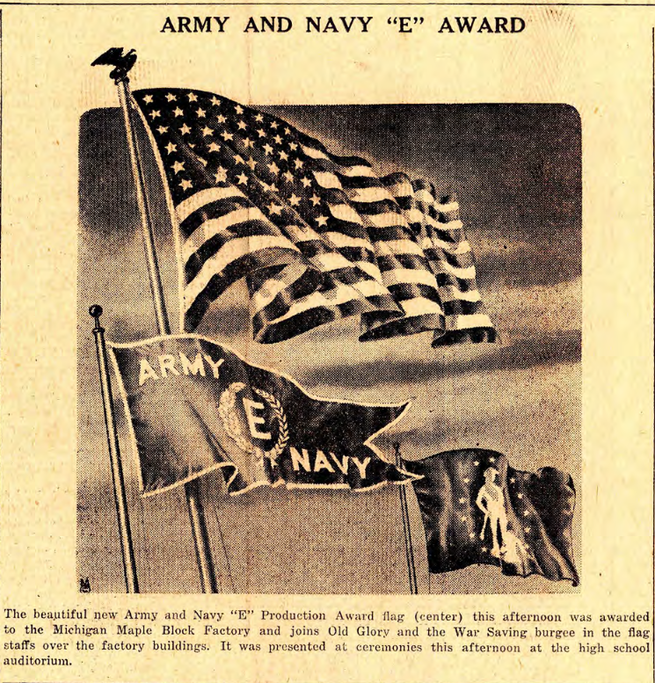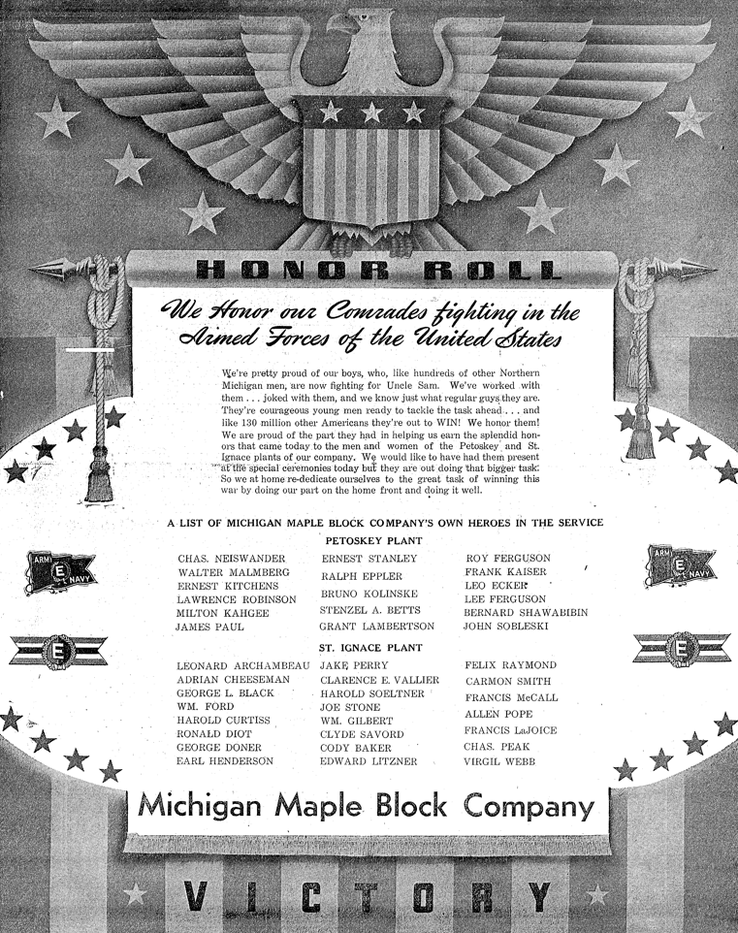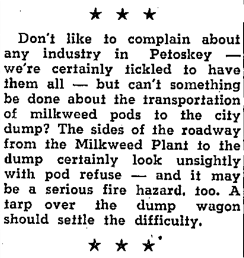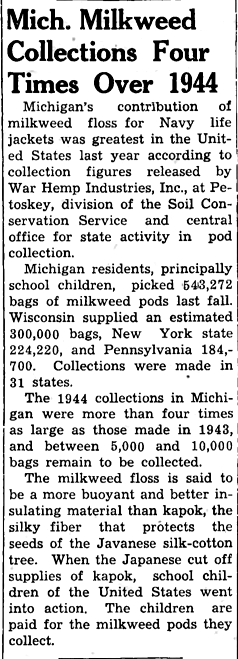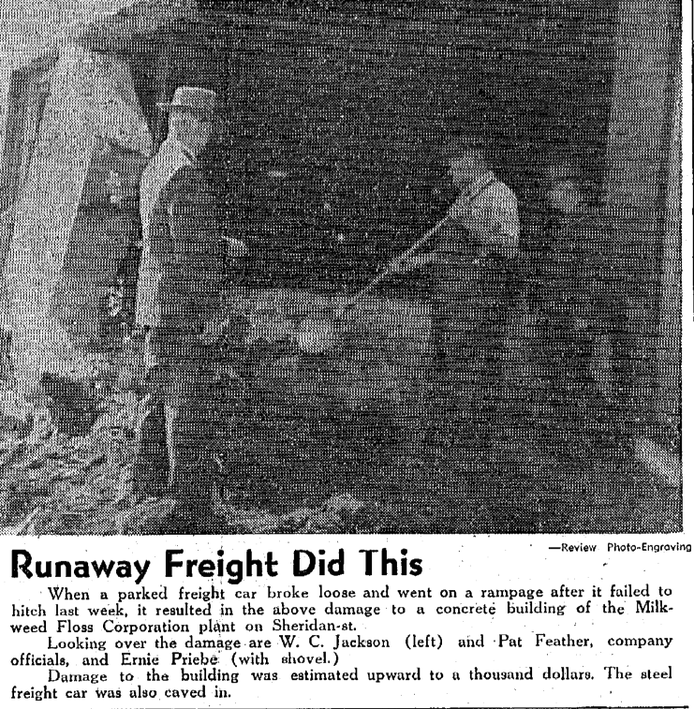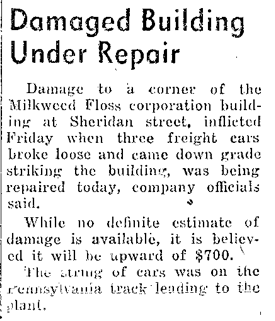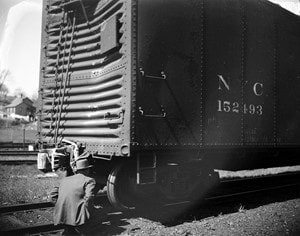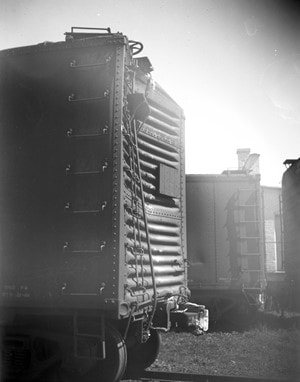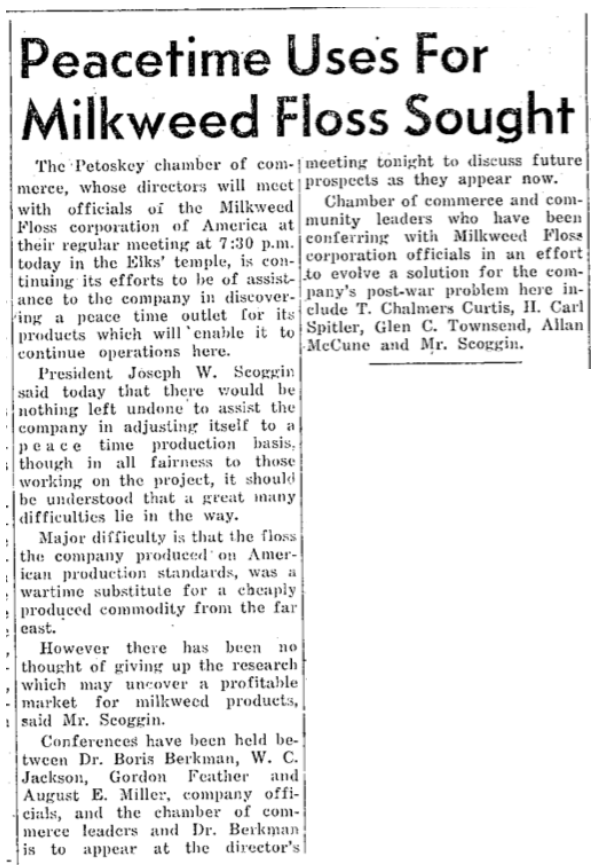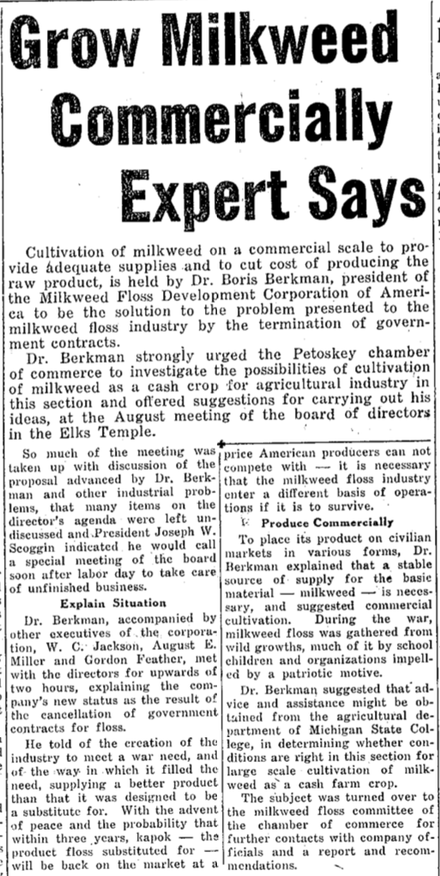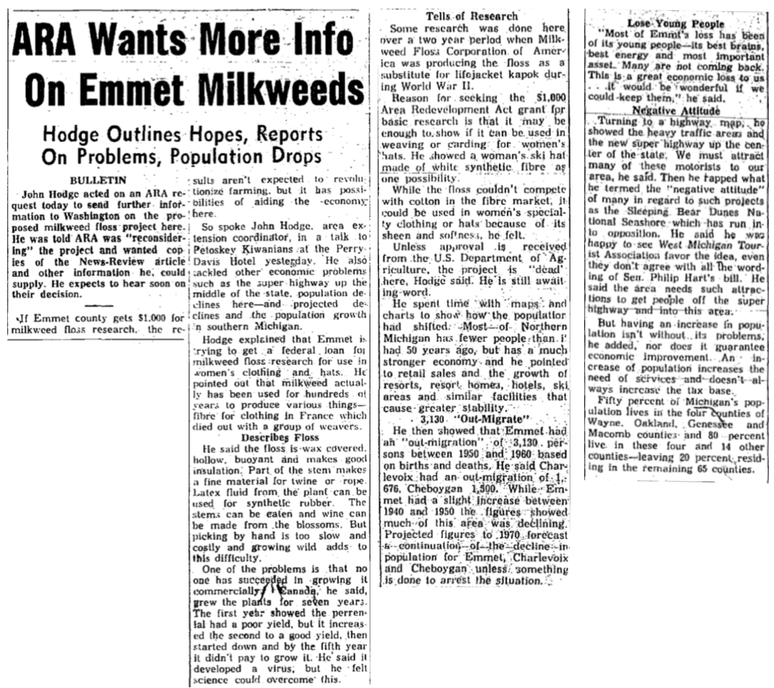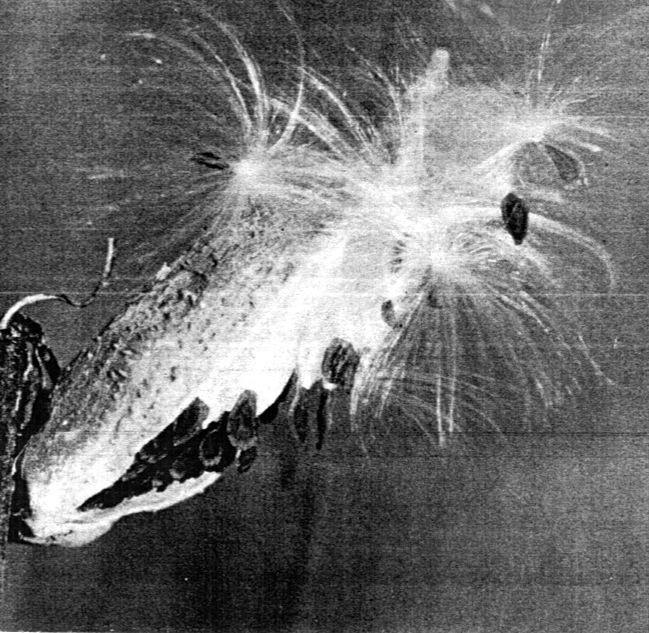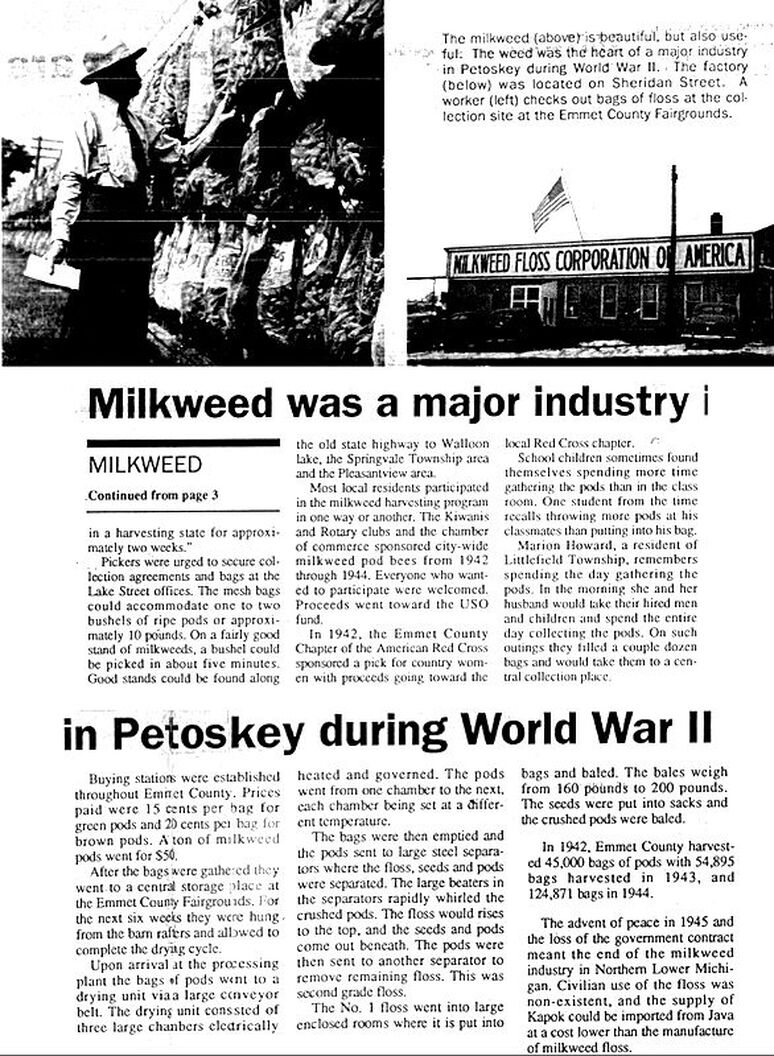~ WWII Need For Milkweed Pods ~
Please do not copy the photos on this site, many of which have been submitted by private individuals...
just come back and visit the site often to view the photos.
just come back and visit the site often to view the photos.
Ralph Waldo Emerson wrote:
"What is a weed? A plant whose virtues have not been discovered."
In 1928, the government was trying to rid the land of milkweed... the "noxious weed". By 1943, however, the government was advertising for everyone, and anyone, young, or old, to collect the milkweed pods, and to be paid for doing so! The milkweed pod's "virtue had been discovered" as naturalist Ralph Waldo Emerson had stated.
~~~~~~~~~~~~~~~~~~~~~~~~~~~~~~~~~~~~~~~
I had heard for years from my husband Sheldon Buckmaster's mother Lucille Buckmaster about how during the WWII era, she would go into the fields, especially near their Petoskey (Emmet County) MI home, and pick milkweed pods for the war effort. She told how the milkweed floss was used for the filling in flotation vests for the military personnel. During WWII civilians, adults and children, were a very important part of the war effort, and everyone truly put forth! I had not realized the scope of this Milkweed Pod collection effort in the Emmet County area until a friend shared with me, to look through, many of his family's photos. Then I discovered this ORIGINAL photo below of the Emmet County Fairgrounds with some of the 125,000 bags of pods, collected in 1944. The Emmet County Fairgrounds was the "world's largest milkweed center, and the location of the only processing plant of its kind in the world" according to the article shown farther below, from the Petoskey Public School student written newspaper "The Hi-light" from the Thursday, November 2, 1944 issue. ~ Karla Howard Buckmaster
NOTE: Records show the first fair was held here in 1895 by the Little Traverse Agricultural Association, but old timers told that horse racing was conducted here prior to that.
Photo above: Emmet County Fairgrounds during WWII
with thousands of hanging bags filled with collected milkweed pods...
Little Traverse Bay is in the background.
with thousands of hanging bags filled with collected milkweed pods...
Little Traverse Bay is in the background.
A weed goes to war, and Michigan provides the ammunition by Gerald Wykes
(Article written in 2014 for the Michigan History magazine)
(Article written in 2014 for the Michigan History magazine)
Four Photos Below: In 1942 milkweed pods hung to dry on every available hanging space
at Emmet county's fairgrounds track fence, grandstand, and inside the exhibit barns.
at Emmet county's fairgrounds track fence, grandstand, and inside the exhibit barns.
Dr. Boris Berkman, below, was the founder and perpetuator of the Milkweed Floss Corporation of American. He was standing on the fairground's grandstand third in from the right... along with other local citizens. Notice the drying milkweed pods bags hanging from the grandstand.
Picking Milkweed Pods In The Petoskey Area
~ Community Effort ~
In Gerald Wykes' Michigan History magazine article to be accessed above, he wrote of Petoskey's community of the Rotary, Kiwanis, Business Owners, and Chamber of Commerce conducting a massive "Milkweed Picking Bee" because Petoskey Community members were proud of being at the center of the new milkweed pod industry. Wykes continued, "The group had a picnic lunch in the field near the Bear Creek fire tower, followed by an invocation and much speechmaking. At least 1,000 bags were picked before rain ended the day." Although the following photos were not labeled, they were part of a collection of milkweed photos, and certainly could have been taken the day described in Gerald Wyke's article above.
Photo Below: Mayor Nyman and Wilson McDonald pose for a photo
while attending the 1942 opening of the Milkweed Project.
while attending the 1942 opening of the Milkweed Project.
Photo Below: Another photo opportunity, this time for Mr. Lyons
and a reporter from the Detroit Free Press, at the Milkweed Project opening...
Mr. Lyons was the vice-president and treasurer of the
Milkweed Floss Corporation of American (housed in the Preston-Feather building).
and a reporter from the Detroit Free Press, at the Milkweed Project opening...
Mr. Lyons was the vice-president and treasurer of the
Milkweed Floss Corporation of American (housed in the Preston-Feather building).
Photo Below: Proposed site of the "milkweed processing factory"
NOTE the cupolas on the rooftop, and locate the same ones on the building in the next photo.
NOTE the cupolas on the rooftop, and locate the same ones on the building in the next photo.
Photo Below:
Compare the building far left with the same cupolas on the roof as in the photo above.
Compare the building far left with the same cupolas on the roof as in the photo above.
Photo News Article Below: Compare the building below with the photos above and below it.
Photo Above: In about 1994 Preston Feather advertised in a special 4 page section of the Petoskey News Review that the store was "Celebrating 79 Years". The history of the photos above included the following: "The first lumber outlet was on Sheridan Street at the railroad tracks. When World War II broke out, the government took over the building, and began harvesting and manufacturing milkweed floss for use in military lifejackets. Preston Feather & Sons moved their building supply business to 405 East Lake Street. An advertisement from May of 1944 says 'Lumber Has Gone To War'. In their Lake Street location, Preston Feather offered a full line of building materials.
After the war the lumber company moved to its present location at 900 Spring Street and continued to grow as Petoskey did...."
After the war the lumber company moved to its present location at 900 Spring Street and continued to grow as Petoskey did...."
1929 Sanborn Map below shows the railroad tracks going into the "Preston Feather & Sons Lumber Yard." The tracks ran near Porter Street, and on across Spring Street. That is the railroad track angling through Preston’s parking lot now in 2020, explained by the way those buildings are shaped at an angle. That is why/how the Flat Iron Building in Downtown Petoskey (behind the Chamber of Commerce Building) was built in the shape it was built… to accommodate the railroad tracks. So, the P-F company obviously owned their Spring Street property even before they were basically forced to move there during WWII.
In 1946 Maynard S. Barnumn purchased the previous Milkweed Floss Plant,
where he proceeded to make paper twine
(Read about Mr. Barnumn's other Petoskey Businesses).
where he proceeded to make paper twine
(Read about Mr. Barnumn's other Petoskey Businesses).
Photos Below: The fenceline photos are of the property of Michigan Maple Block... Petoskey, Michigan's oldest industry existing still in 2020.
UPDATE:
The Michigan Maple Block Co. shut down operation after more that a Century.
The company had been operating on a very thin margin,
and then Governor Gretchen Whitmer
made an executive order due to the COVID-19 to shut doors;
the company said it was impossible to continue as a viable business
and would close by 20 June 2020.
Approximately 56 employees were affected with this announcement.
UPDATE:
The Michigan Maple Block Co. shut down operation after more that a Century.
The company had been operating on a very thin margin,
and then Governor Gretchen Whitmer
made an executive order due to the COVID-19 to shut doors;
the company said it was impossible to continue as a viable business
and would close by 20 June 2020.
Approximately 56 employees were affected with this announcement.
The article above written in 1952 stated Michigan Maple Block had burned in 1913, but the article below from 18 January 1912 The Petoskey Record reported a fire at Michigan Maple Block.
1 November 2016 ~ Photo Below: This is the same location on Standish Avenue as the OLD photo above showing the milkweed pods hanging on the fence to dry during the 1940s. The fence may be a different fence, but it is in the same location. The white in the field behind the fence is milkweed pods.
|
The Friday, September 1, 1944 Mt. Adams Sun published an article titled "Milkweed Pickers Wanted: Silk Is Needed for War." The article shows a picture of a completed vest, gives vast amounts of information about the milkweed pod collection process, and further explains the work involved in the processing of the milkweed pods as follows: "After the pods are picked, they must be handled properly in order to make the highest quality of floss. It is very important that the bags be hung on a fence, clearing the ground by at least 12 inches, to get the full benefit of sun and wind, within 24 hours after picking. A ballpark, school or fairgrounds fence, or some other convenient and adequate location may be chosen. Someone must be on duty to check out empty bags and receive, pay for, and hang up full bags of pods every evening and Saturday during the collection season. Also, it is necessary to rehang any bags which fall down, retie any that have been opened and, especially after wet weather, to shake each bag to fluff it up and help drying. Dew, rain or snow do not hurt the pods if the bags are hung up properly. After two to six weeks, the thoroughly dried bags are put indoors to await pickup." This article certainly explains why the Emmet County Fairgrounds was the perfect site for this milkweed collection process.
|
|
The following website quoted lists the duration dates of the milkweed processing plant in Petoskey.
"The Fluffy-Floss Rangers" "Charles Fletcher Swingle was put in charge of the massive nationwide effort to collect milkweed pods. The horticulturist and assistant director of the milkweed floss division of War Hemp Industries in Petoskey, Michigan, oversaw the project from its start in November 1943 through its end in June 1945." ~~~~~~~~~~~~~~~~~~~~~~~~~~~~
The following website quoted an interesting article telling the process for which the pods would undergo:
"Milkweed Pods for War", 1944: "The collected pods were shipped to the milkweed processing and seed extraction plant of the Milkweed Floss Corporation of America, built in 1943 at Petoskey, Michigan. The Middleboro Gazette on November 17, 1944, described the process which the pods would undergo at Petoskey for its readers. '…They will be run over a hot air dryer for a few minutes, then removed from the bags and put through a machine that first takes off the pods, then picks the seeds from the floss. The floss is pressed into bales and shipped to the manufacturers of life saving garments into which it is quilted.'" ~~~~~~~~~~~~~~~~~~~~~~~~~~~~
The following article "Milkweed plays important role in Petoskey history" written by Simon Otto stated that he remembered a milkweed factory then called Preston Feathers on Sheridan Street in Petoskey MI located where Preston Feathers had been located, previous to moving on to Spring Street.
~~~~~~~~~~~~~~~~~~~~~~~~~~~~
|
The article above is from the July 31, 1942 Prescott [AZ] Evening Courier Page 3. It told about the patent holder of the milkweed filled flotation vests for the military to use.
~~~~~~~~~~~~~~~~~~~~~~~~~~~~
~~~~~~~~~~~~~~~~~~~~~~~~~~~~
|
The 1979 obituary below for August E. Miller noted "Mr. Miller organized and operated a milk weed floss factory in Petoskey during the war years when floss was used as a substitute for kapok life jackets."
~~~~~~~~~~~~~~~~~~~~~~~~~~~~
"The fragile beauty of the seed of the wild milkweed, which drifts through the country every fall, means nothing to farmers, who consider it a nuisance. But Life Photographer Wallace Kirkland, who took these pictures, appreciates milkweed because of the pretty patterns its tufted seeds make. Each milkweed pod holds about 170 seeds and to each seed are attached at least 400 fibers which waft it through the air. Though the seed looks delicate, it is a durable traveler, flying 10 miles in good wind before the seed comes to earth. The floss of milkweed is six times more buoyant than cork and was used during the war in life belts and flight jackets. Dr. Boris Berkman, a Chicago physician who headed milkweed processing for the government during the war, has gone into the milkweed business and harvested a crop this fall in Illinois. He plans to use the floss for stuffing pillows, blankets, bedclothes."
A 2014 on-line booklet titled "Milkweeds A Conservation Practitioner's Guide"
by Brianna Borders and Eric Lee-Mader offers an extensive overview of the Milkweed
including its connection to Petoskey MI during WWII.
by Brianna Borders and Eric Lee-Mader offers an extensive overview of the Milkweed
including its connection to Petoskey MI during WWII.
Milkweed Story
In 2015 Wayne Richard "Dick" Smith, wrote about his childhood connection to Petoskey being the World's Milkweed Center. "In 1944, I and about a half dozen other kids in my Petoskey neighborhood were enlisted to fold letters and put them in envelopes ready for mailing. We were paid 25 cents per hour and were employed for about 3 hours a day for over 2 weeks, folding and enveloping thousands of letters to Boy Scout troops all over the US and Canada, soliciting the picking of milkweed pods to replace kapok in the manufacture of life jackets. If I recall correctly it was August Miller who was in charge of all this. He had a son, about a year older than I, who graduated the University of Michigan, was an ROTC student and became career military. The administrative offices of Milkweed Corporation were in the building now occupied by American Spoon Foods on Lake Street. There, in the backroom, we kids folded the letters and put them in envelopes and sealed them. I remember that when the job was done, I had about ten dollars that I had earned, and I bought my first wristwatch with it. It was a good watch too - $10 went a long way in 1944."
Obituary Below: August E. Miller, as Dick Smith mentioned above with his connection to the milkweed center, was the "organizer and operator of the milk weed floss factory in Petoskey during the war years".
Petoskey Newspaper Articles (Posted Below)
Document the Chronology of the
Milkweed Center of the World Located in Petoskey.
Dr. Boris Berkman, below, was the founder and perpetuator of the Milkweed Floss Corporation of American located at the Plant Facility of Preston Feather and Sons. Dr. Berkman visited the Petoskey area as shown in the 1942 photos below, with other city dignataries, viewing the milkweed pods.
Two Photos Below: Dr. Boris Berkman was the founder and perpetuator of the
Milkweed Floss Corporation of America located in Petoskey, Michigan.
Milkweed Floss Corporation of America located in Petoskey, Michigan.
Article Above: Preston Feather & Sons plant had been sold, so the milkweed processing machinery shown in photo below left had been installed. The photo below right shows the Preston Feather & Sons temporary headquarters fo the the Toy Factory managed by Ralph Feather where it had been moved to its temporary headquarters at the Petoskey Waterfront Boat Works.
Below: Harry A. Gunning, of the Soil Conservation War Food Administration of the U.S. Department of Agriculture, will be in direct charge of the pod collection program for the Milkwee Floss Corporation of America.
Photos Above and Below: The only ones identified at this point include the Buckmaster Family: Cliff, wife Lou holding son Sheldon, and daughter Sandra sitting on ground. Click HERE to contact the web master with other identifications.
Photos Above and Below: The Petoskey Odd Fellows No. 282 contributed to the milkweed harvest "war effort". The men are labeled in the clipping below right.
Photo/Text Below: The Michigan Maple Block Company not only provided fence space for hanging the bags of milkweed pods to dry, the company also was producing their butcher blocks, much needed by the military for their thousands of new barracks... Fort Knox alone needed 300 mess halls, along with the need of butcher blocks for the field kitchens.
On 9 February 1943 Michigan Maple Block Company and their employees were first awarded the Army-Navy Production Award Flag, with an "E" for excellence, for high achievement in the production of war material. A second renewal of the award added a second white star to the distinctive flag.
On 9 February 1943 Michigan Maple Block Company and their employees were first awarded the Army-Navy Production Award Flag, with an "E" for excellence, for high achievement in the production of war material. A second renewal of the award added a second white star to the distinctive flag.
On 13 June 1944 the company received notification that it had its E award renewed. This would be its first star.
On 9 January 1945 the company received notification that it had its E award renewed. This would be its second star.
On 9 January 1945 the company received notification that it had its E award renewed. This would be its second star.
If anyone knows the whereabouts of the Michigan Maple Block Army-Navy Production Award Flag, please contact the web master by clicking HERE. It would be interesting to learn the whereabouts, and perhaps receive a photo of the actual flag. The picture below is what the flag would look like with the two stars. This photo has been added, with permission, from David Dwight Jackson. Click HERE to access Jackson's military tribute web site of "The American Automobile Industry in World War Two" with photos of various earned Army-Navy Production Award Flags.
Below: Michigan Maple Block Company Honored those in the Military
as well as their own Employees who were contributing to the "War Effort".
as well as their own Employees who were contributing to the "War Effort".
What was to happen to the milkweed industry
AFTER the cancellation of government contracts for floss?
AFTER the cancellation of government contracts for floss?
Looking Back at the Milkweed Industry in Petoskey in the 1940s
